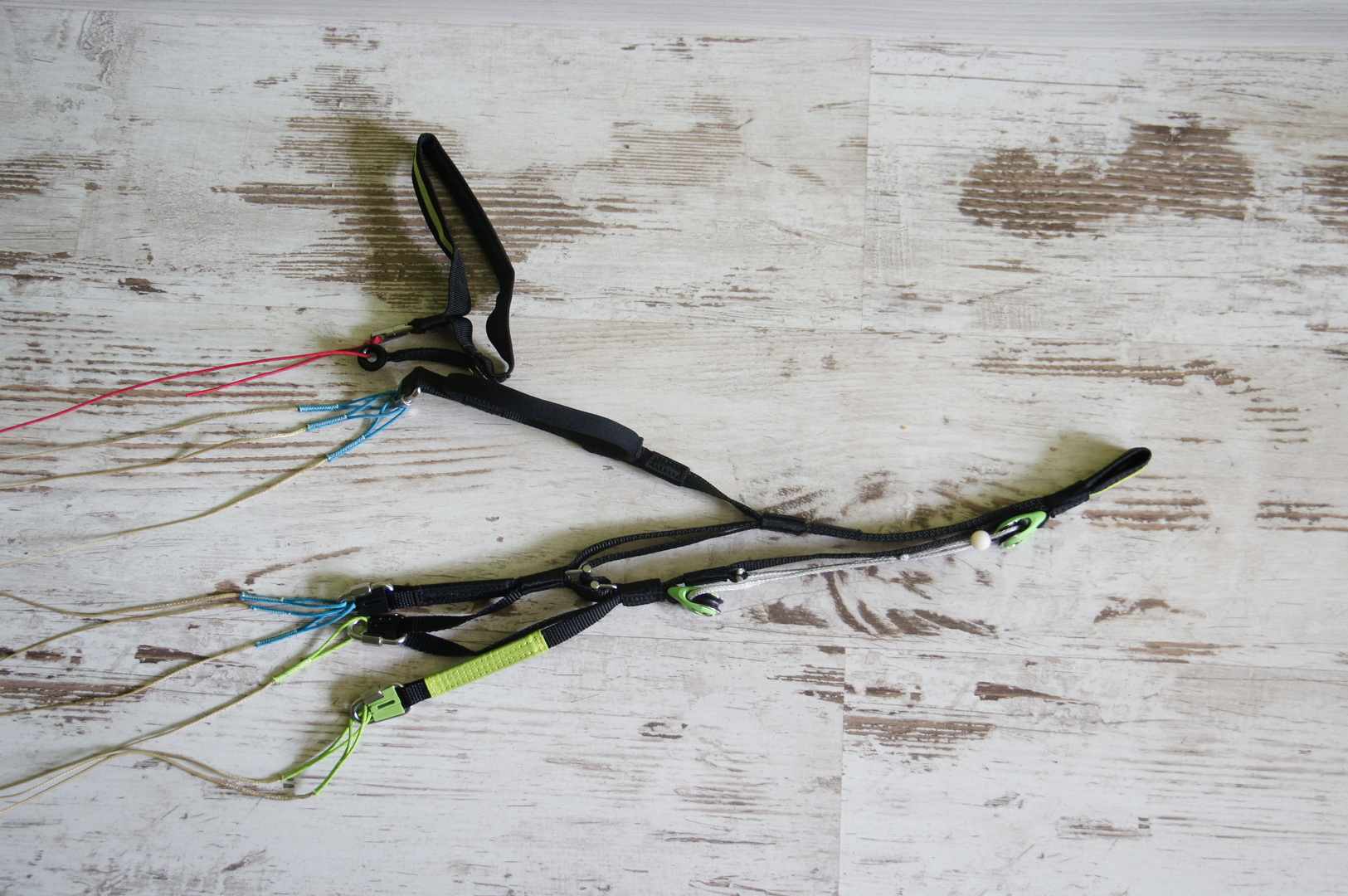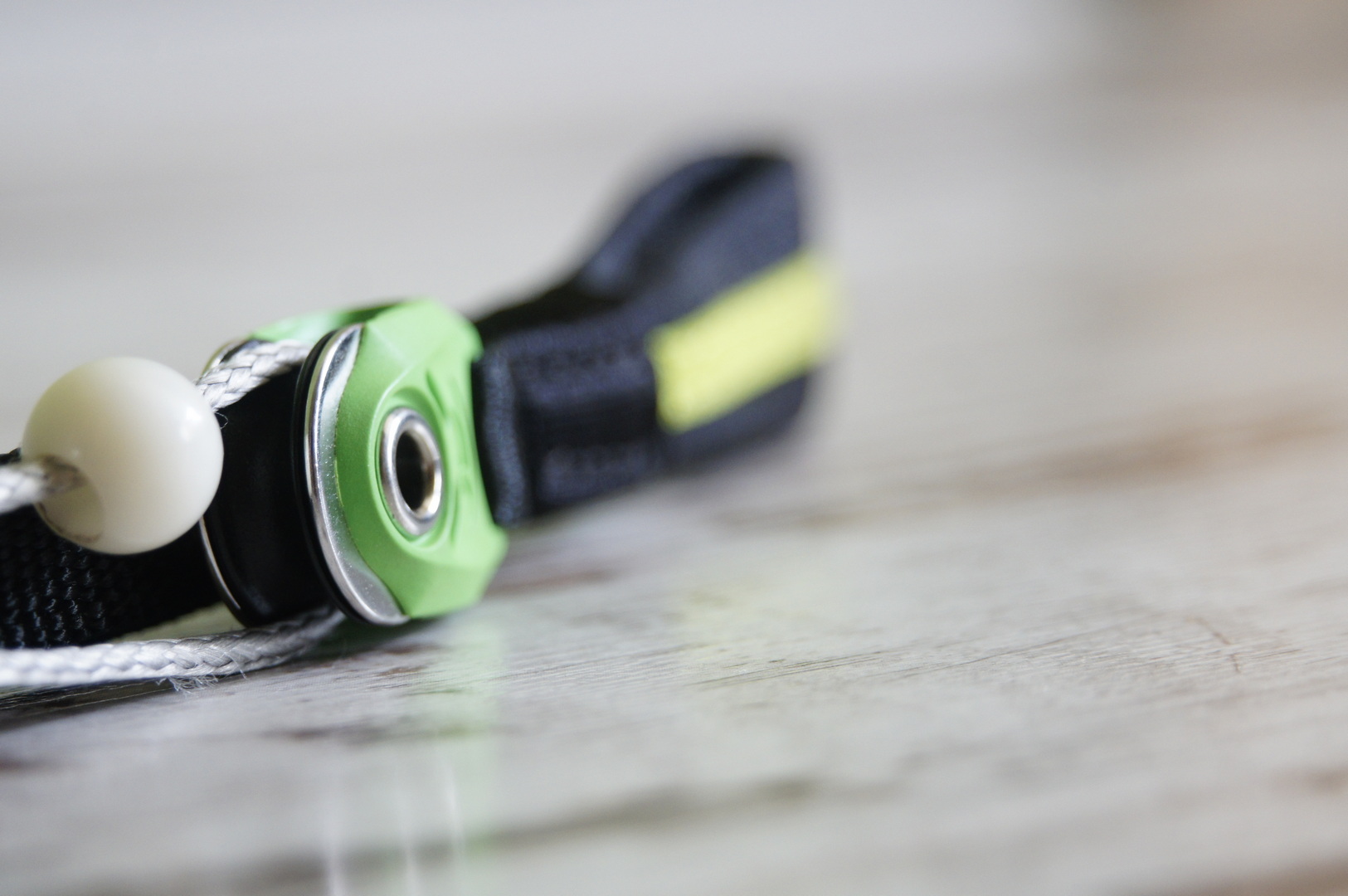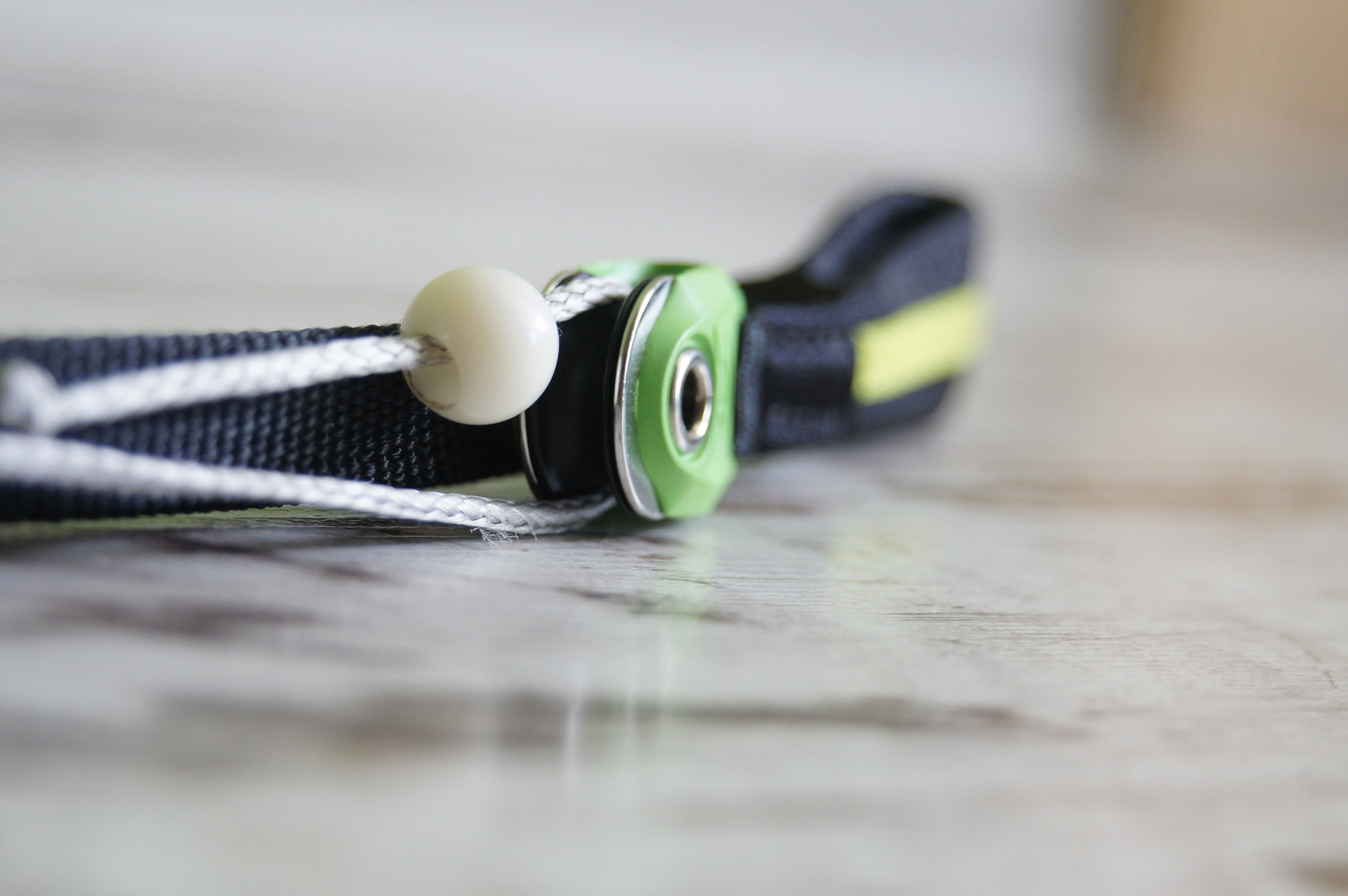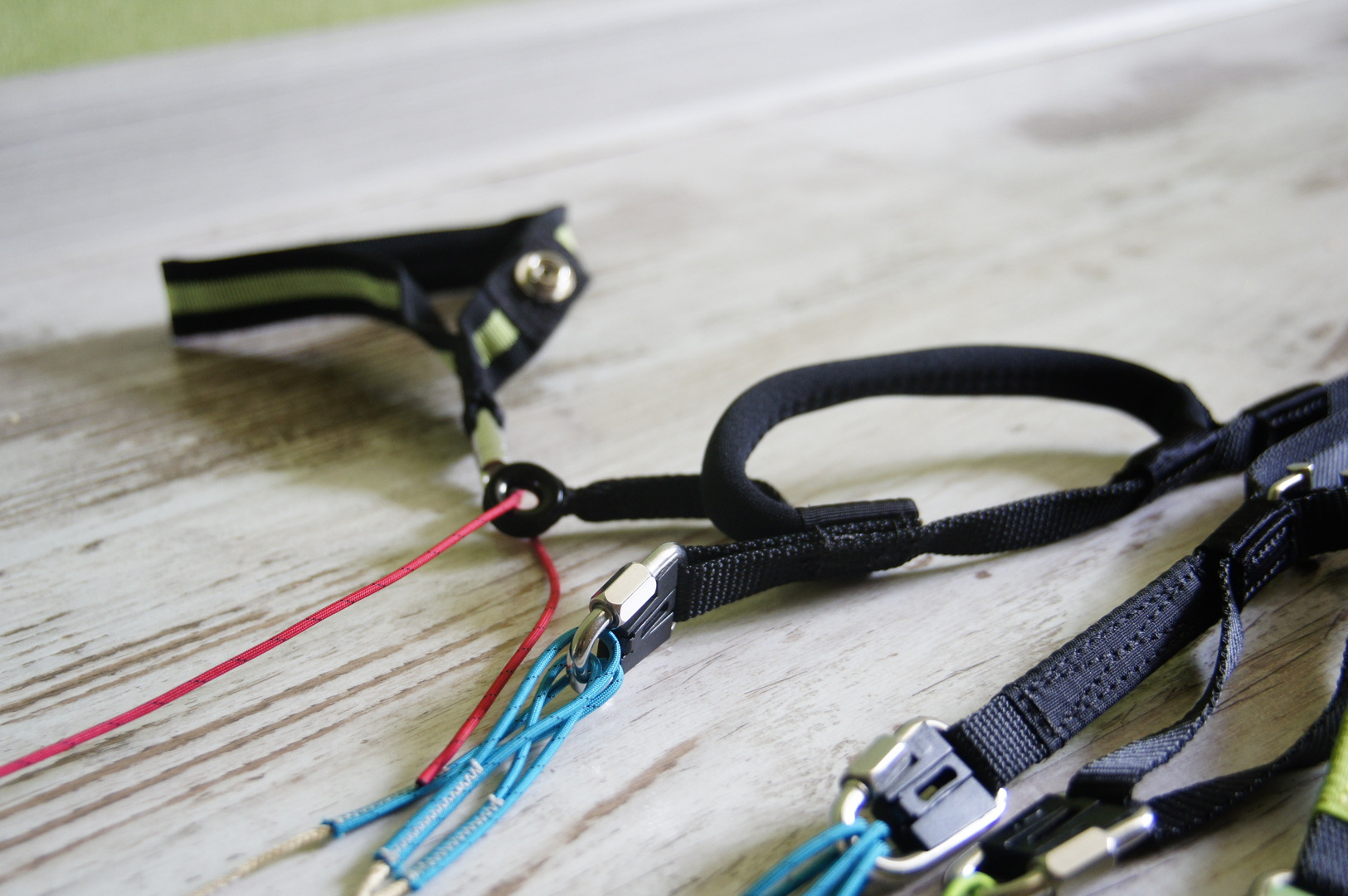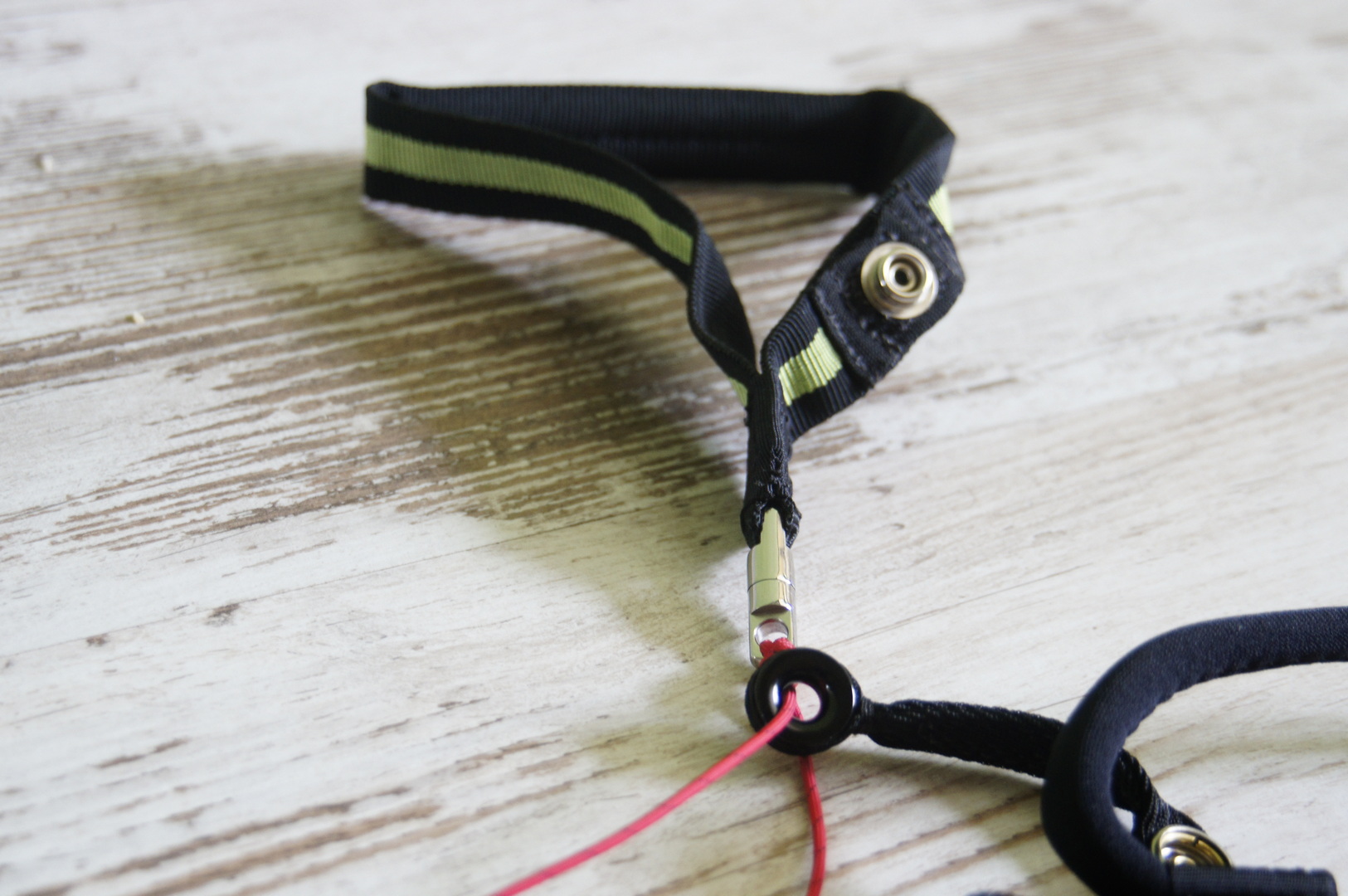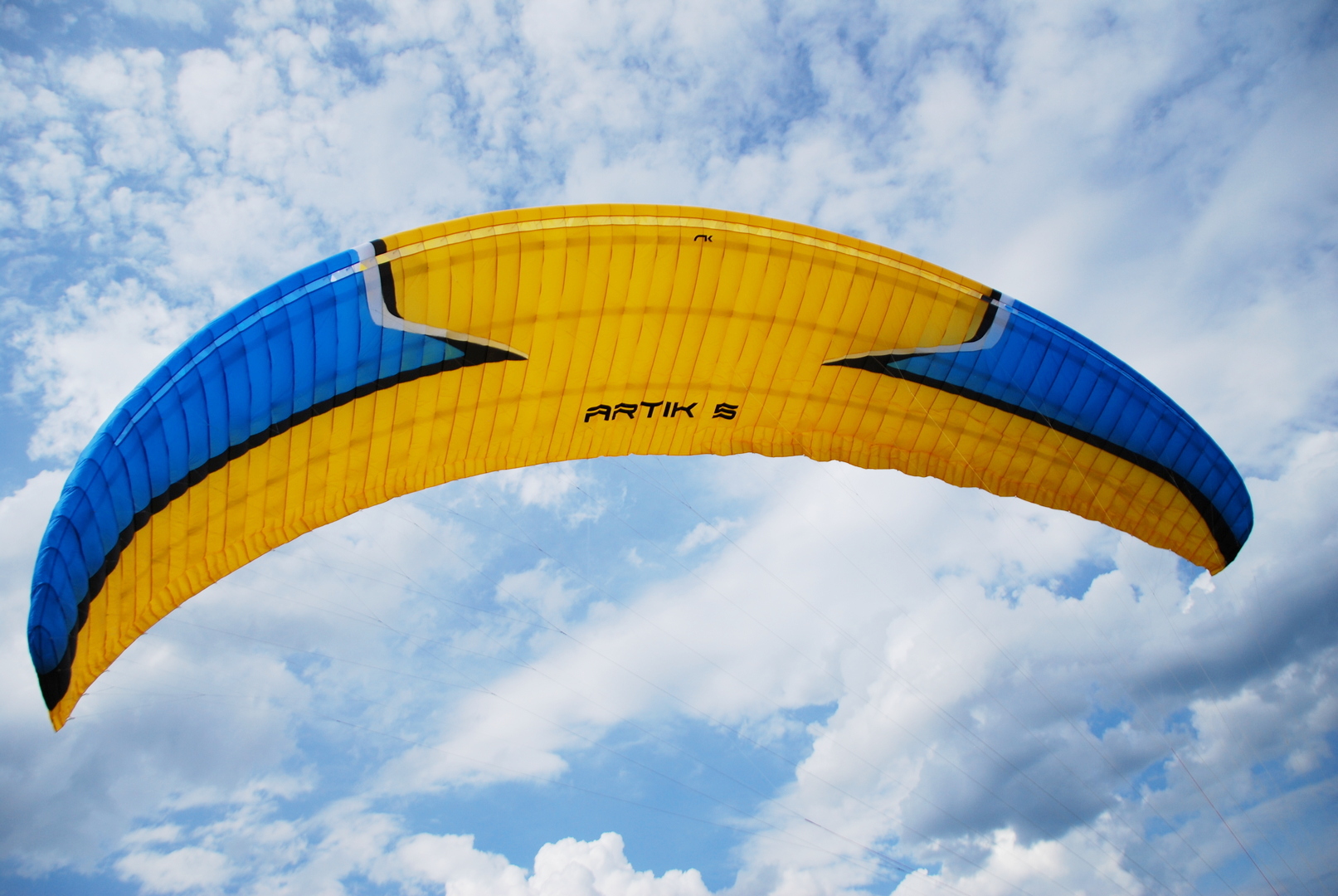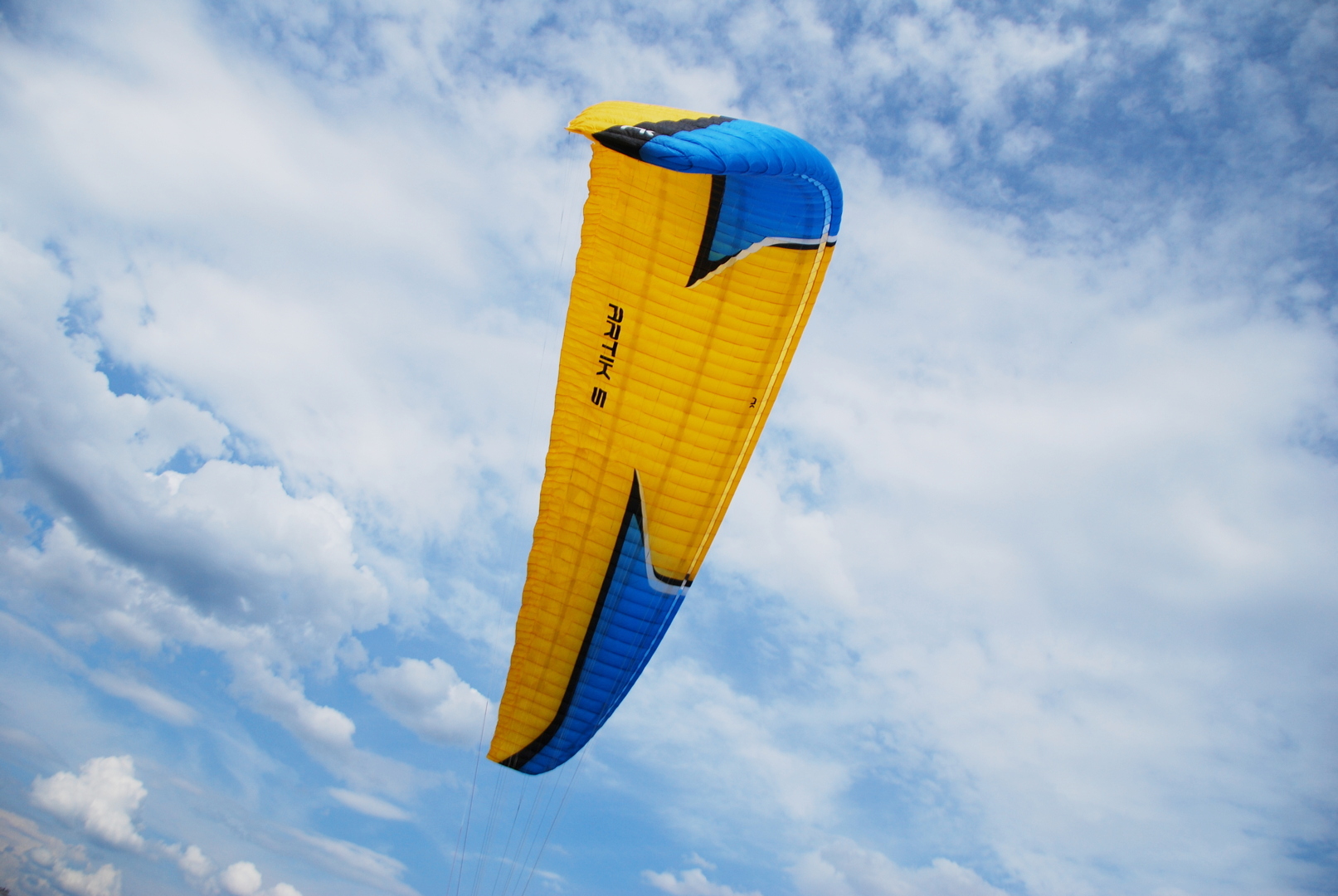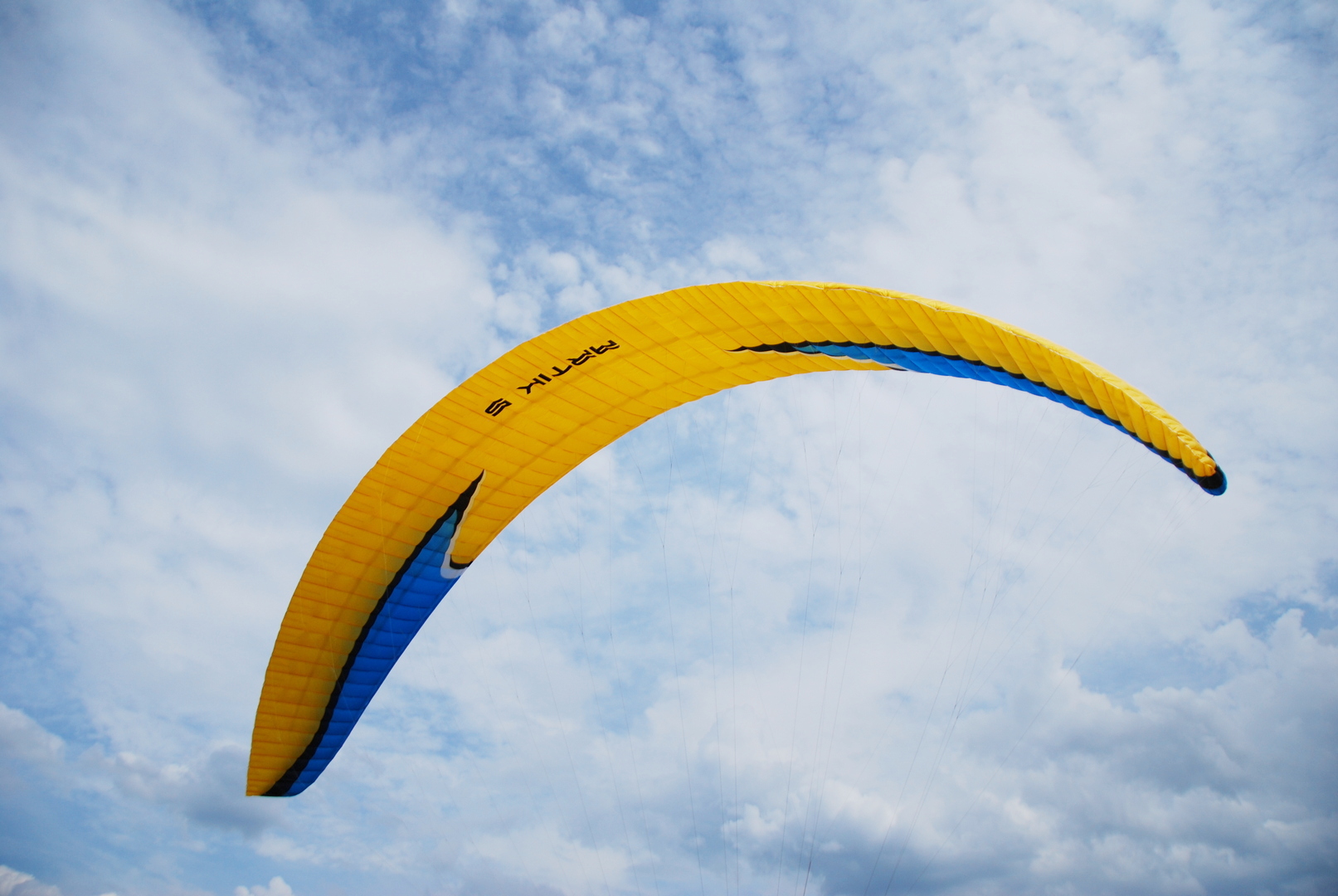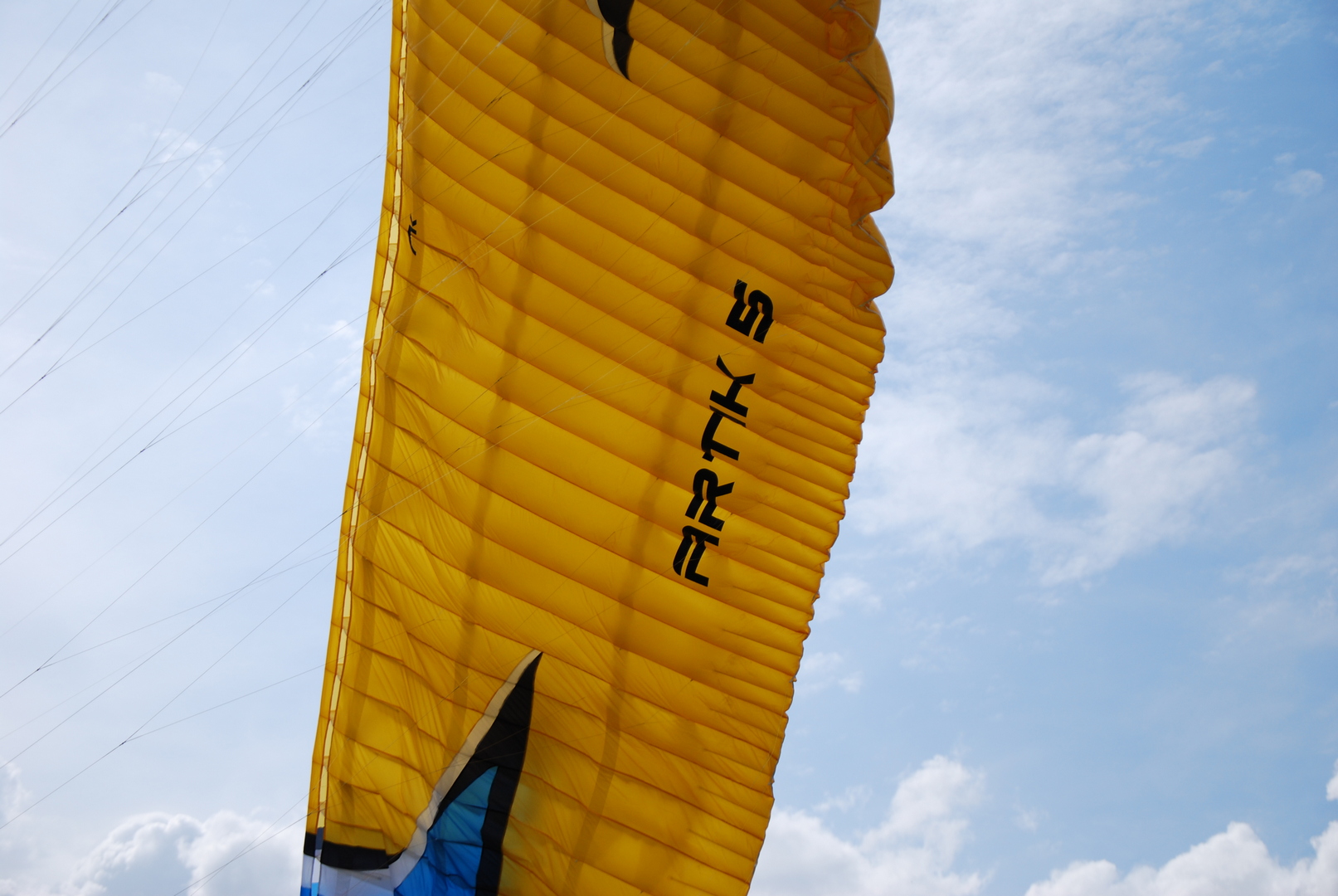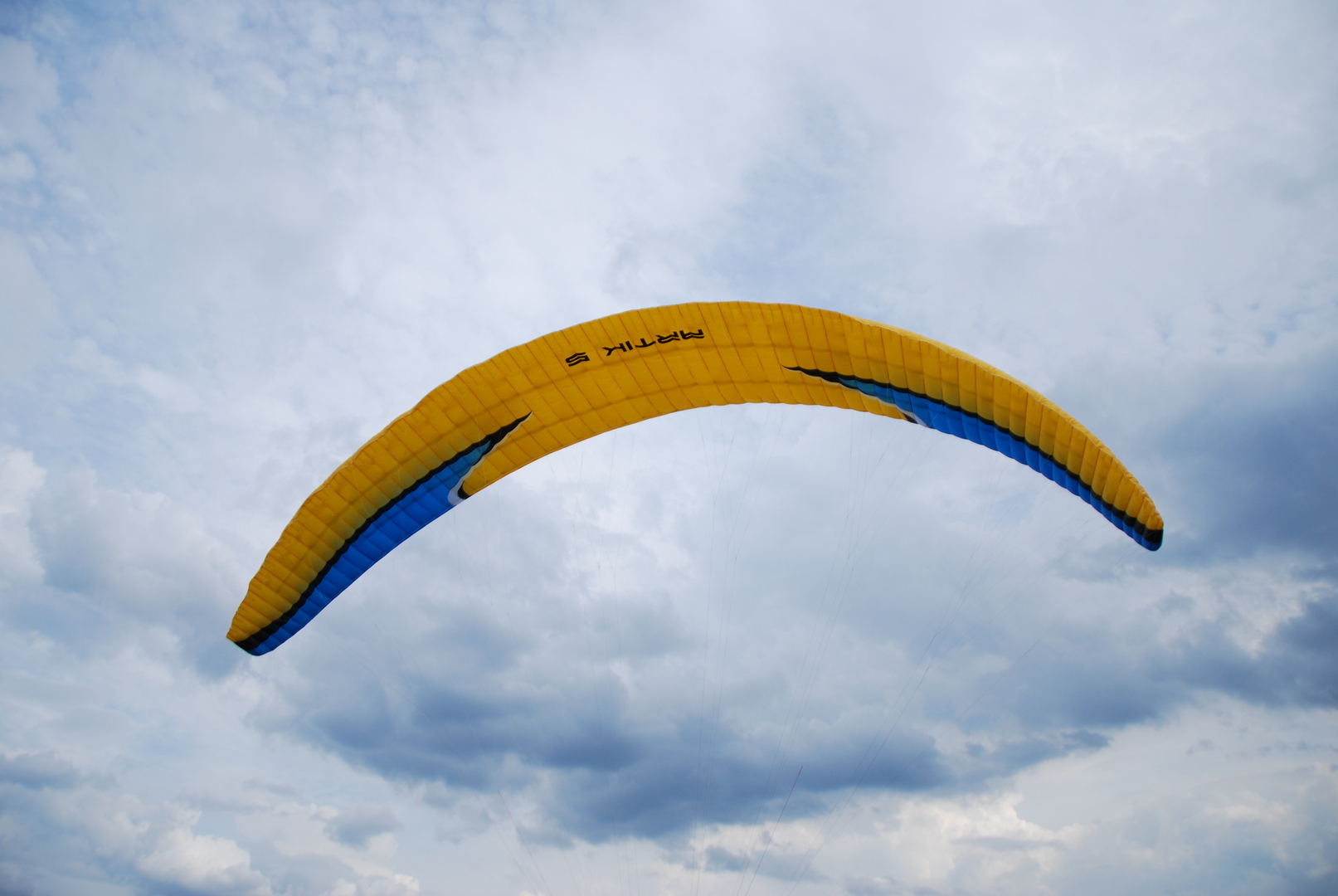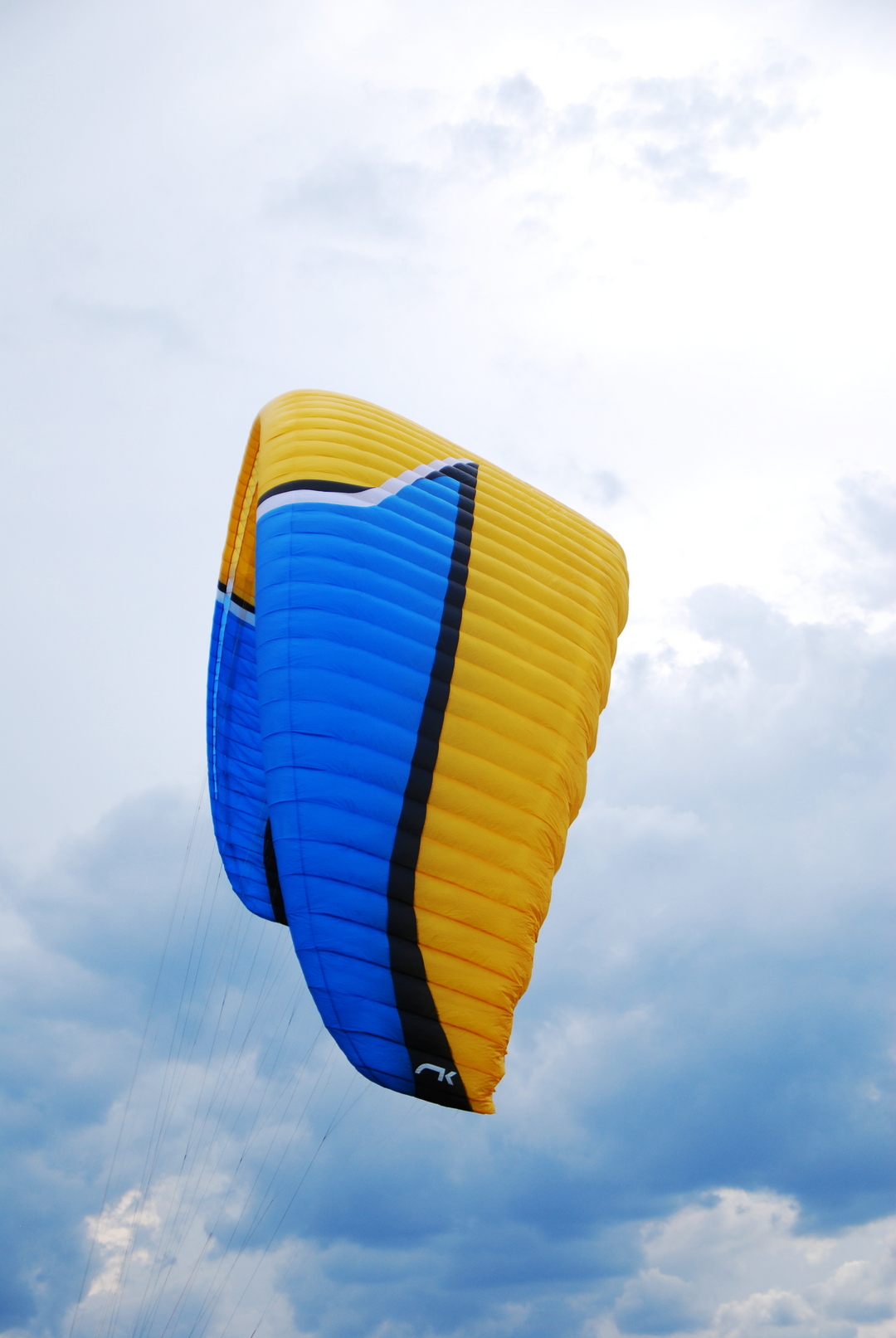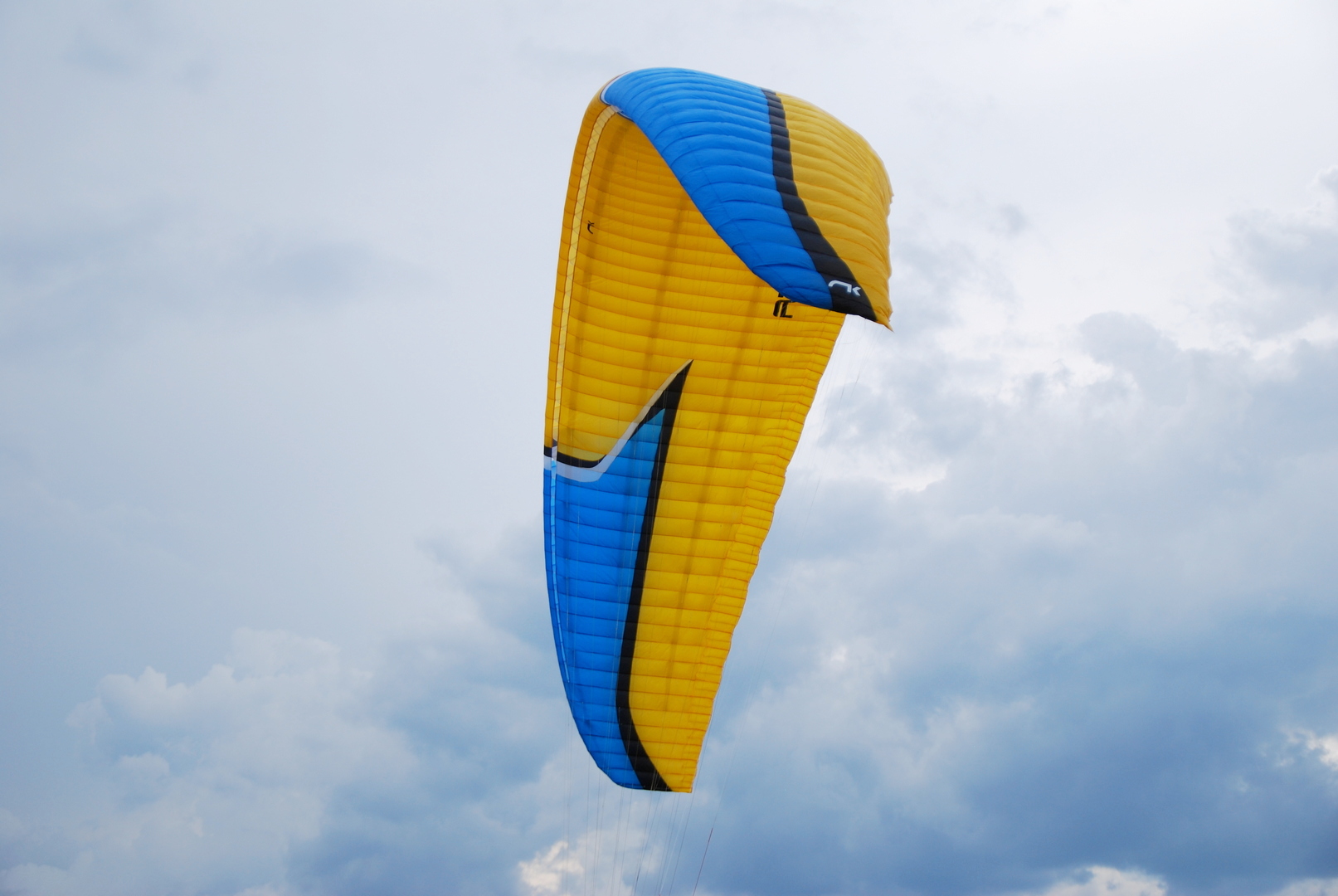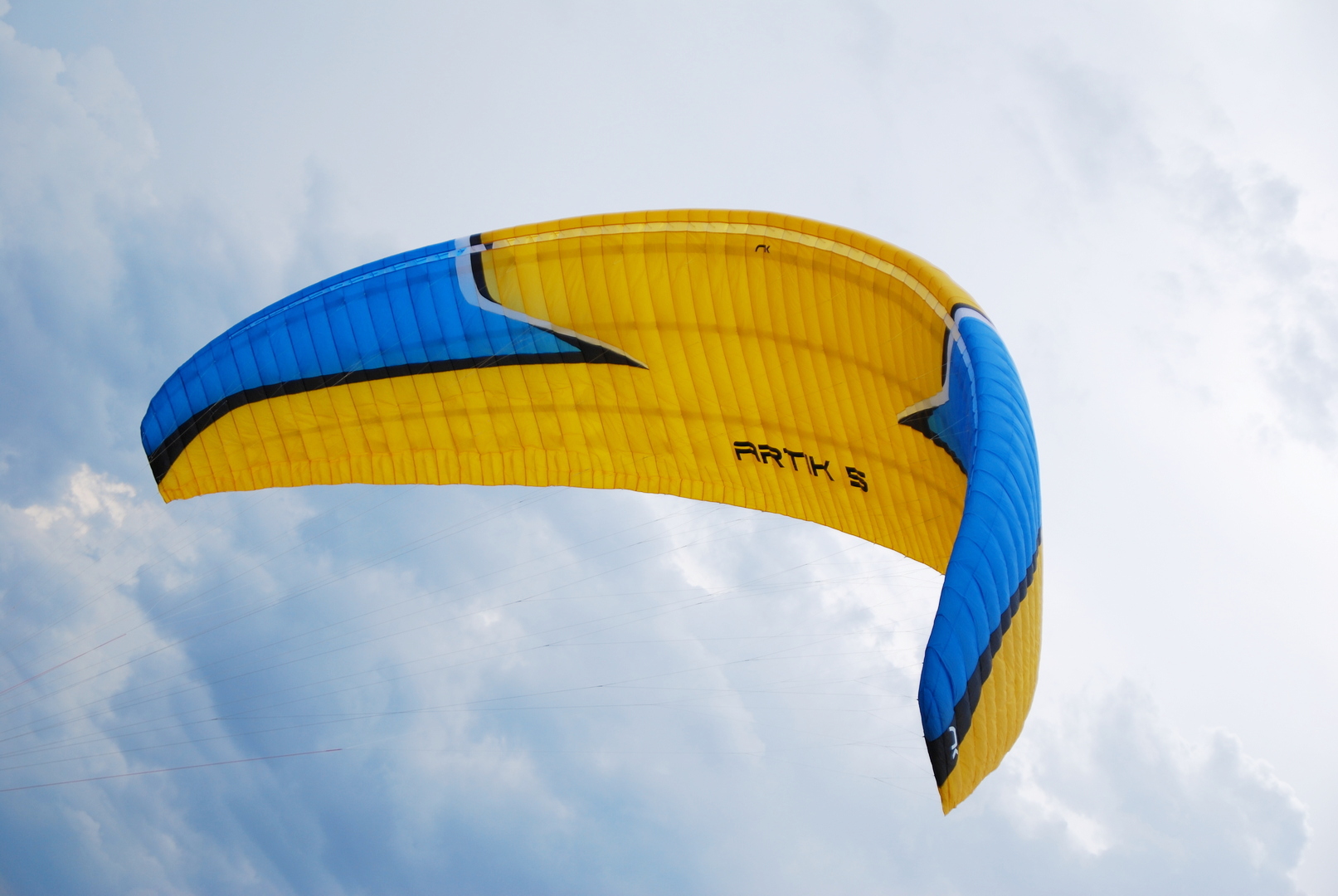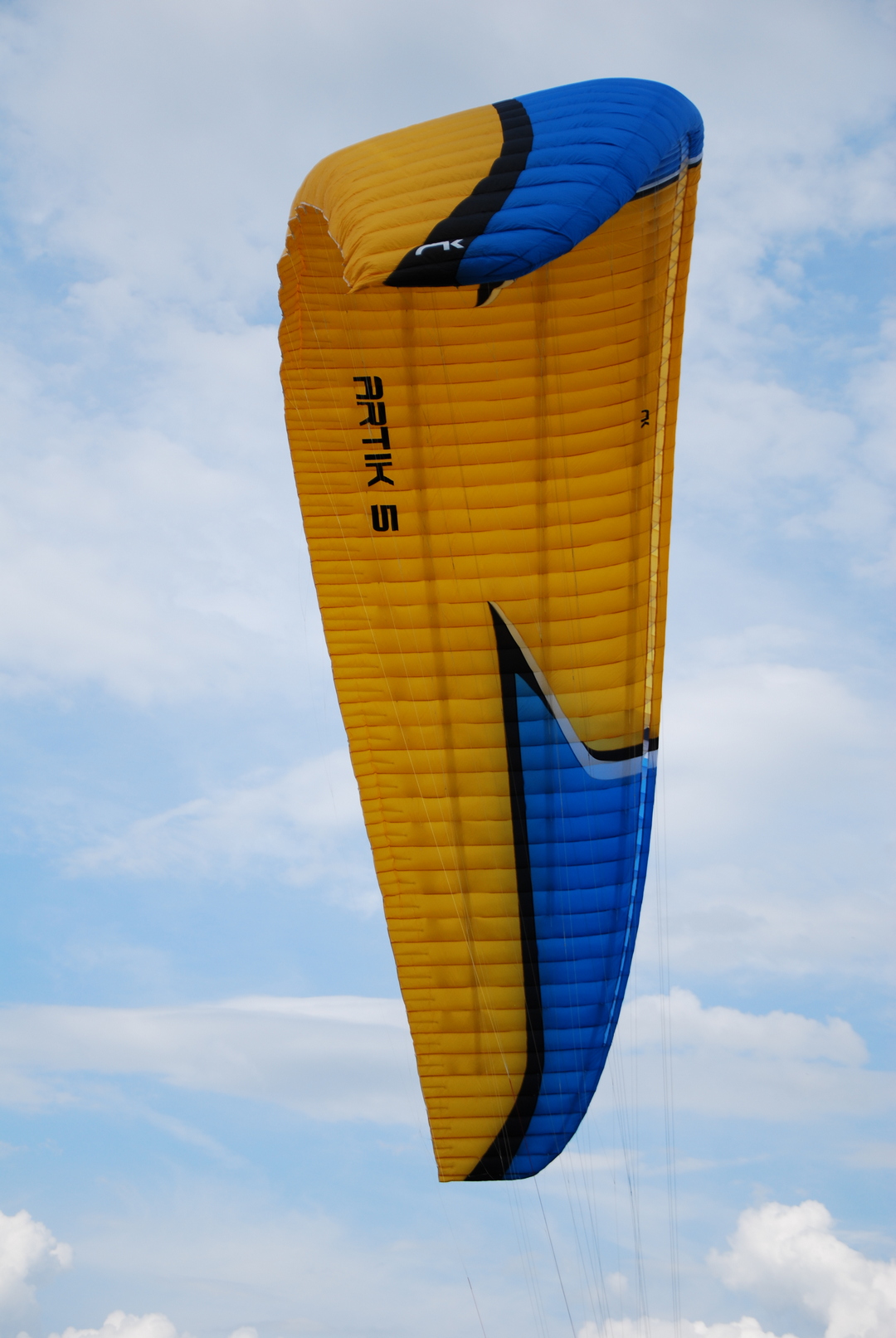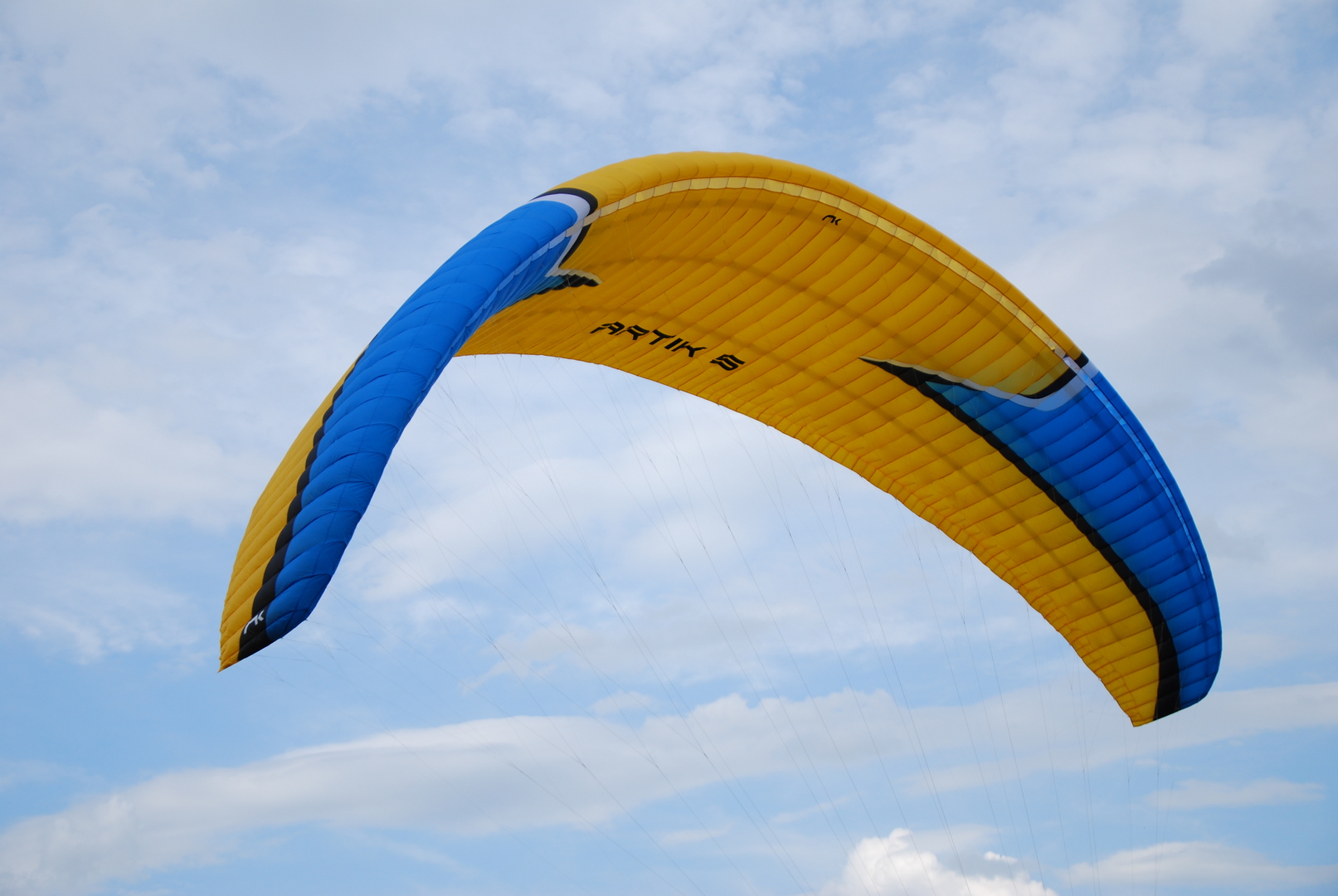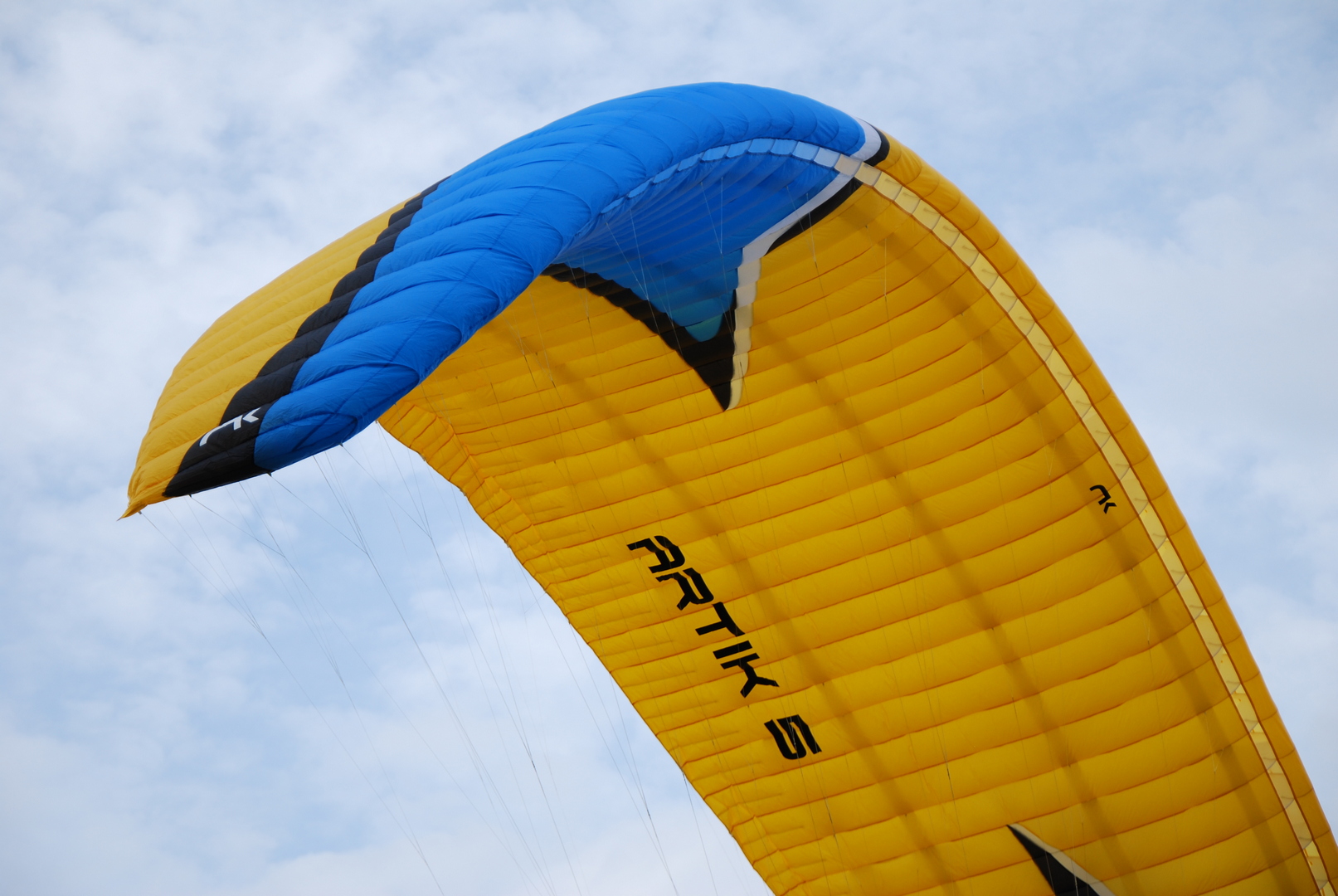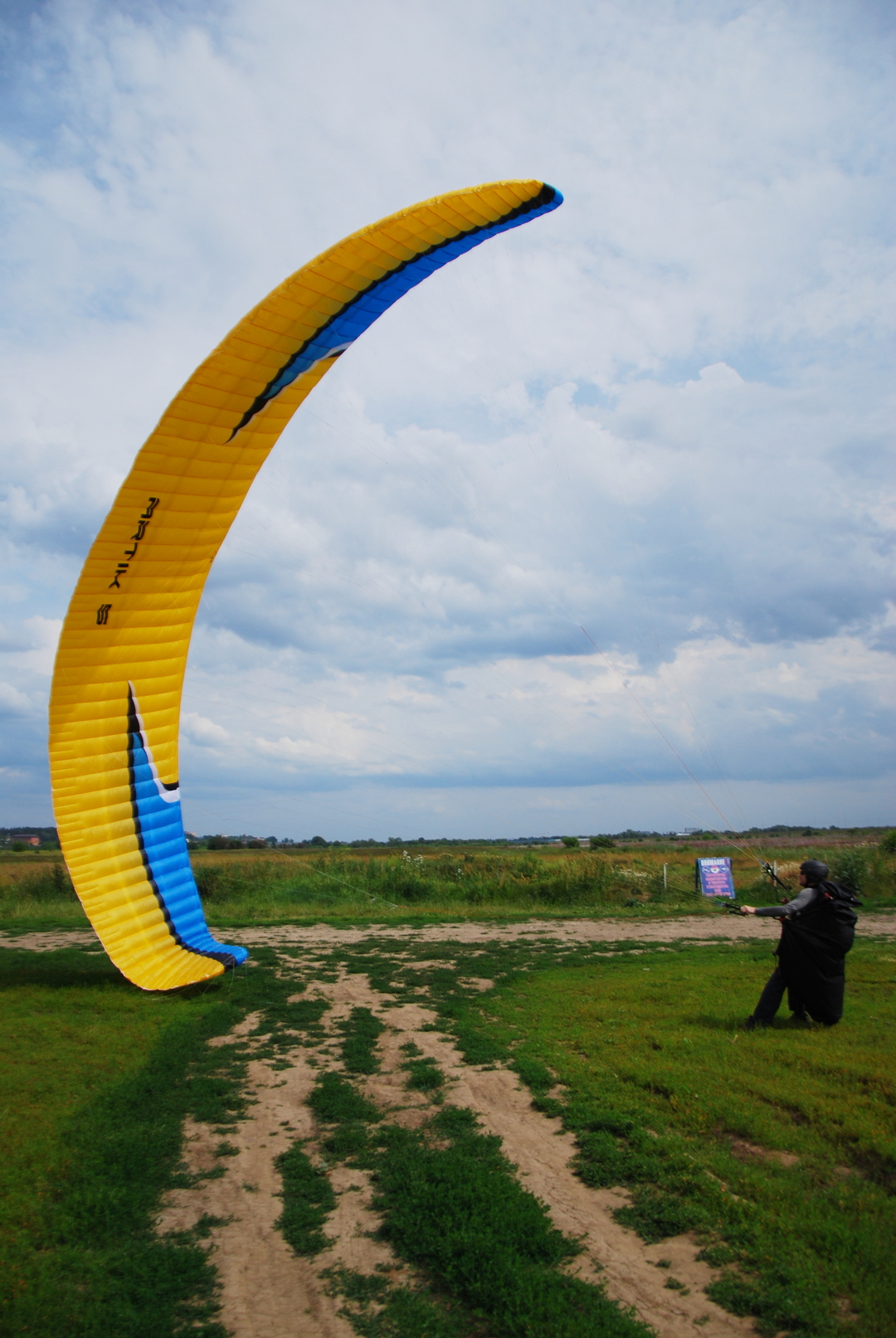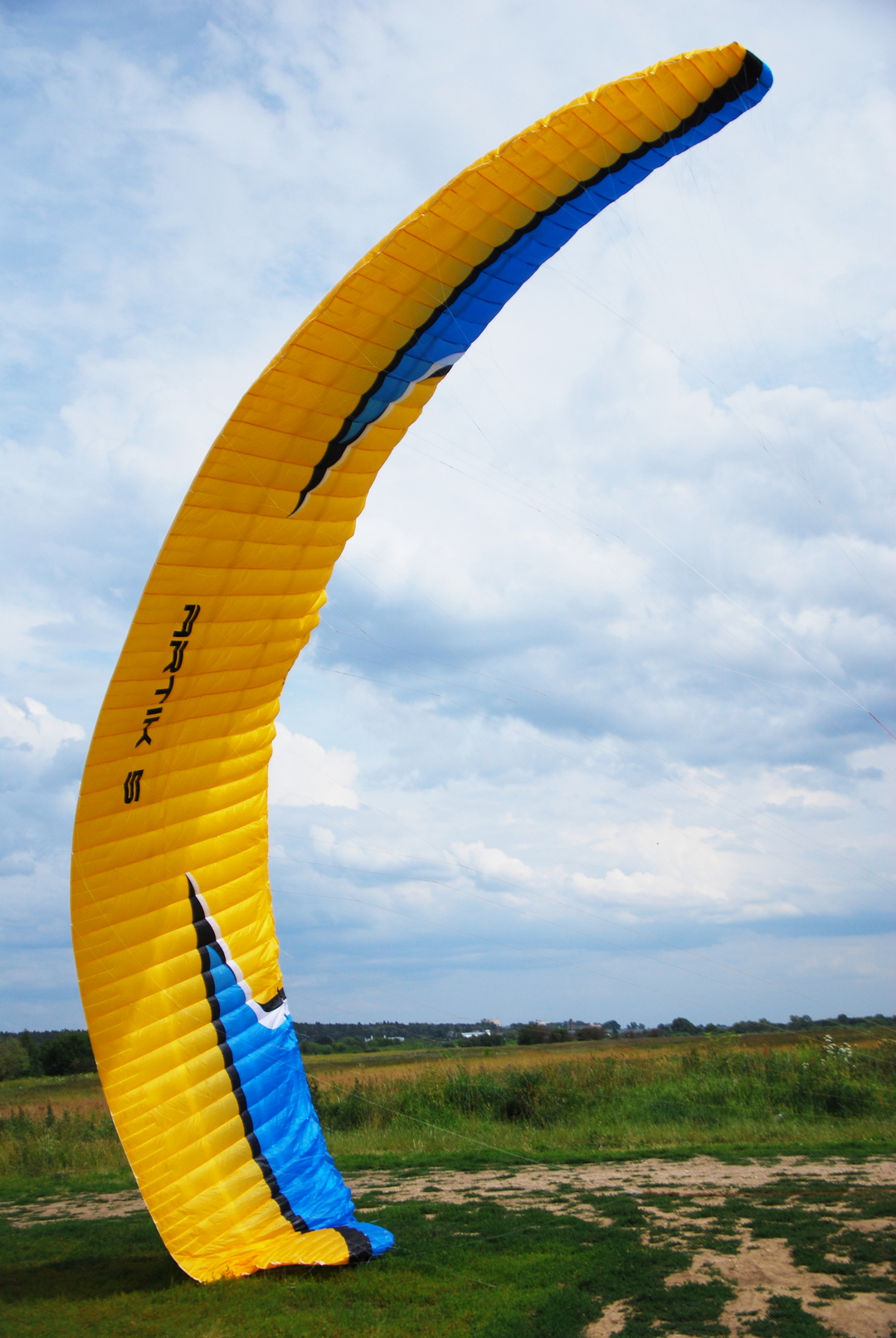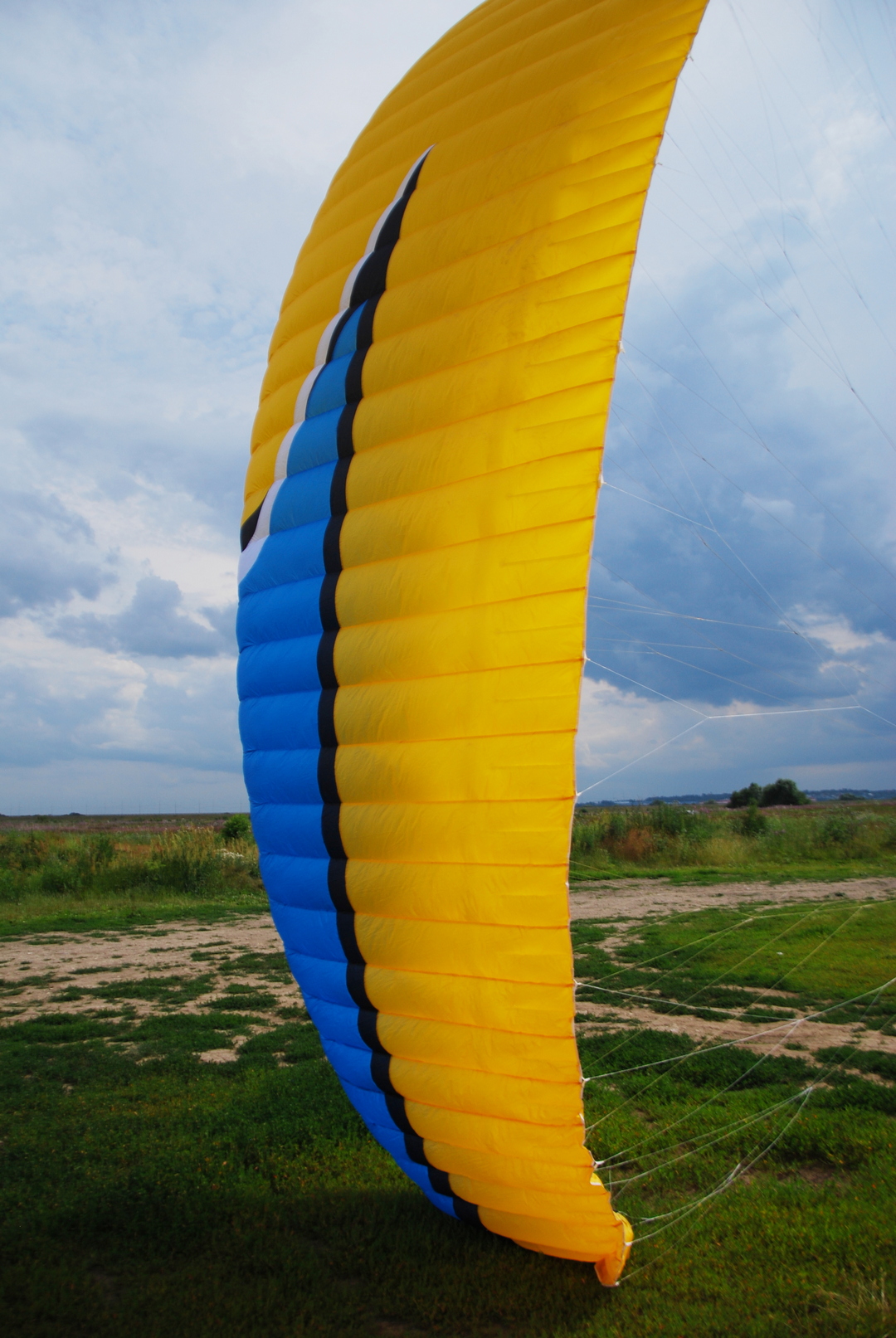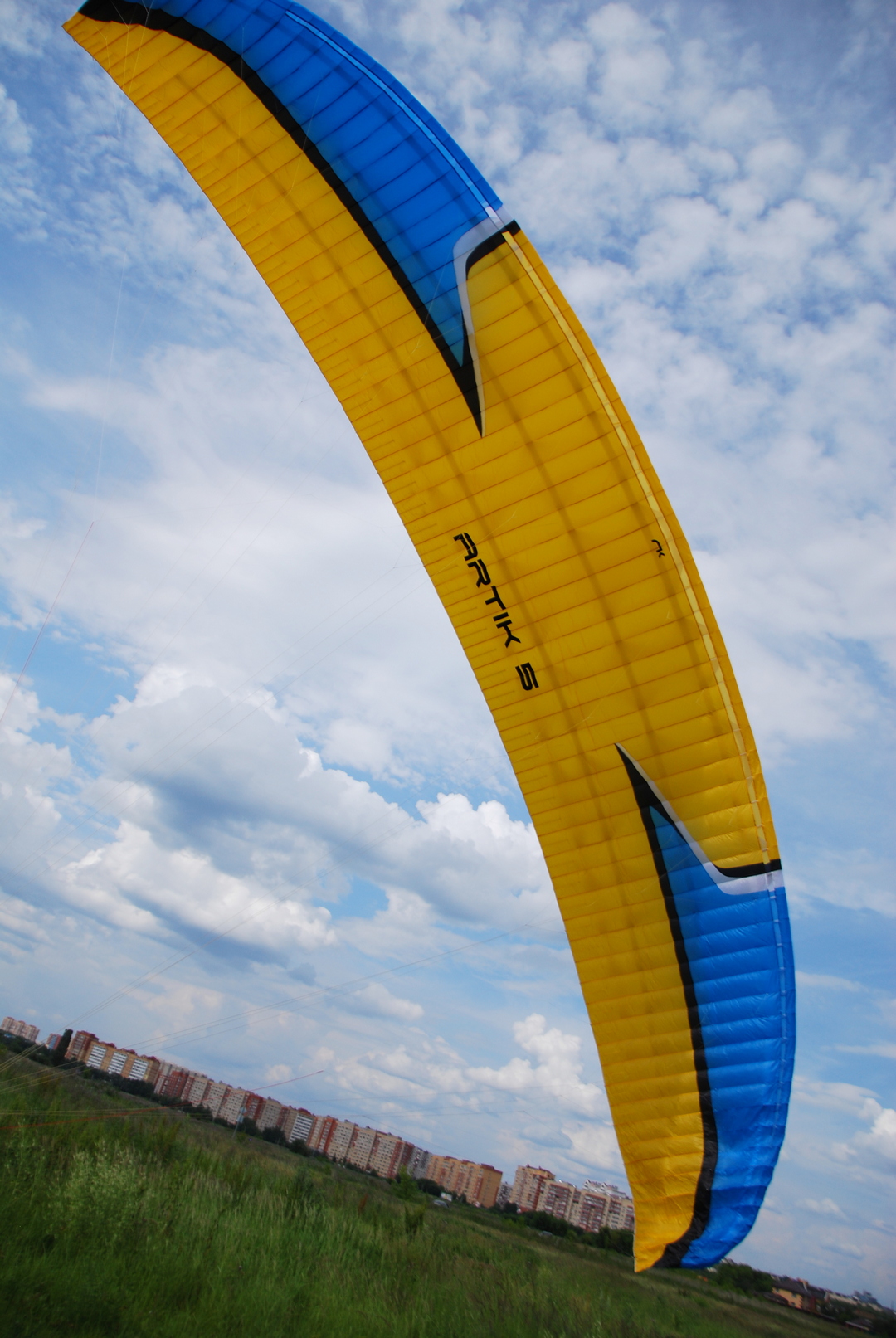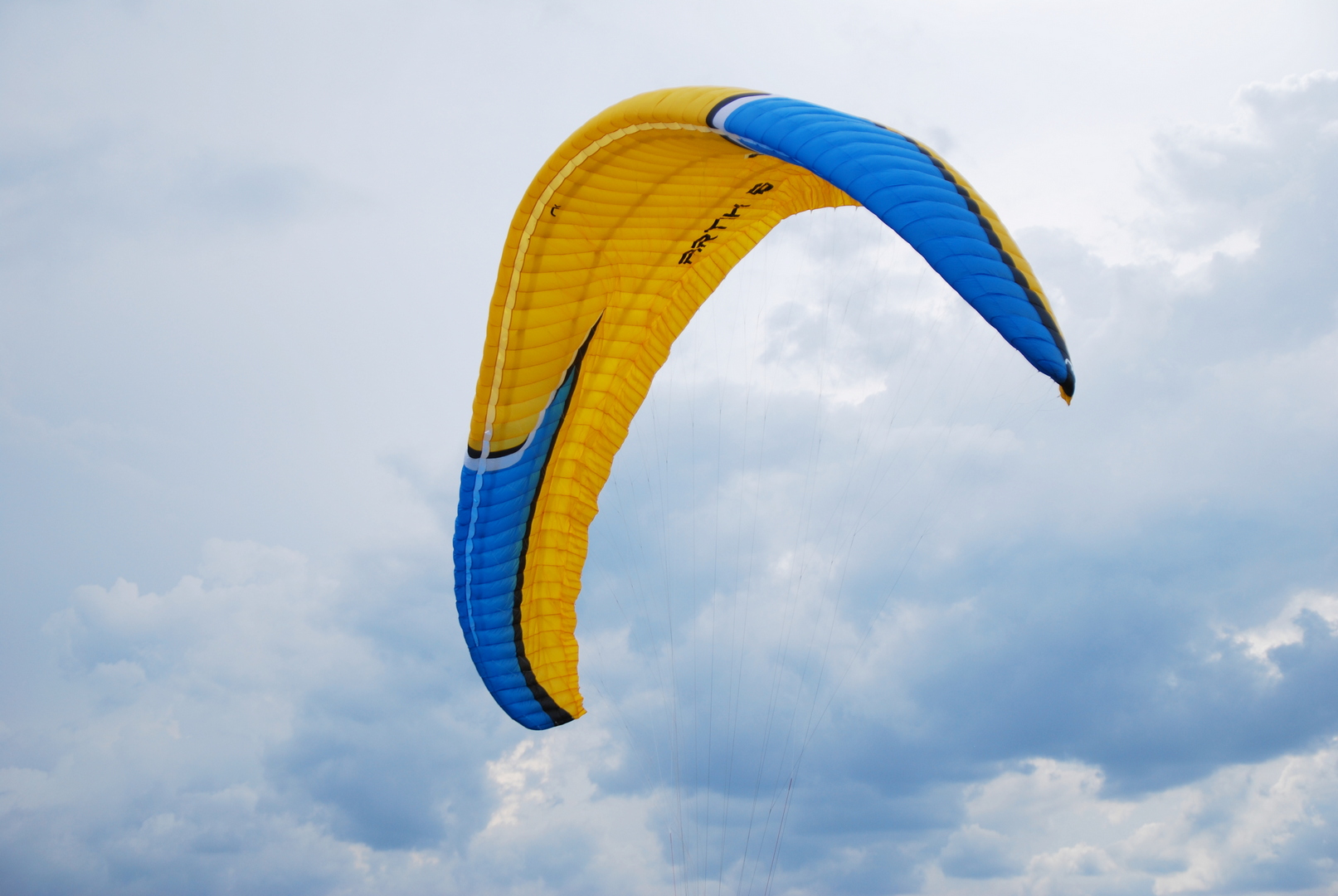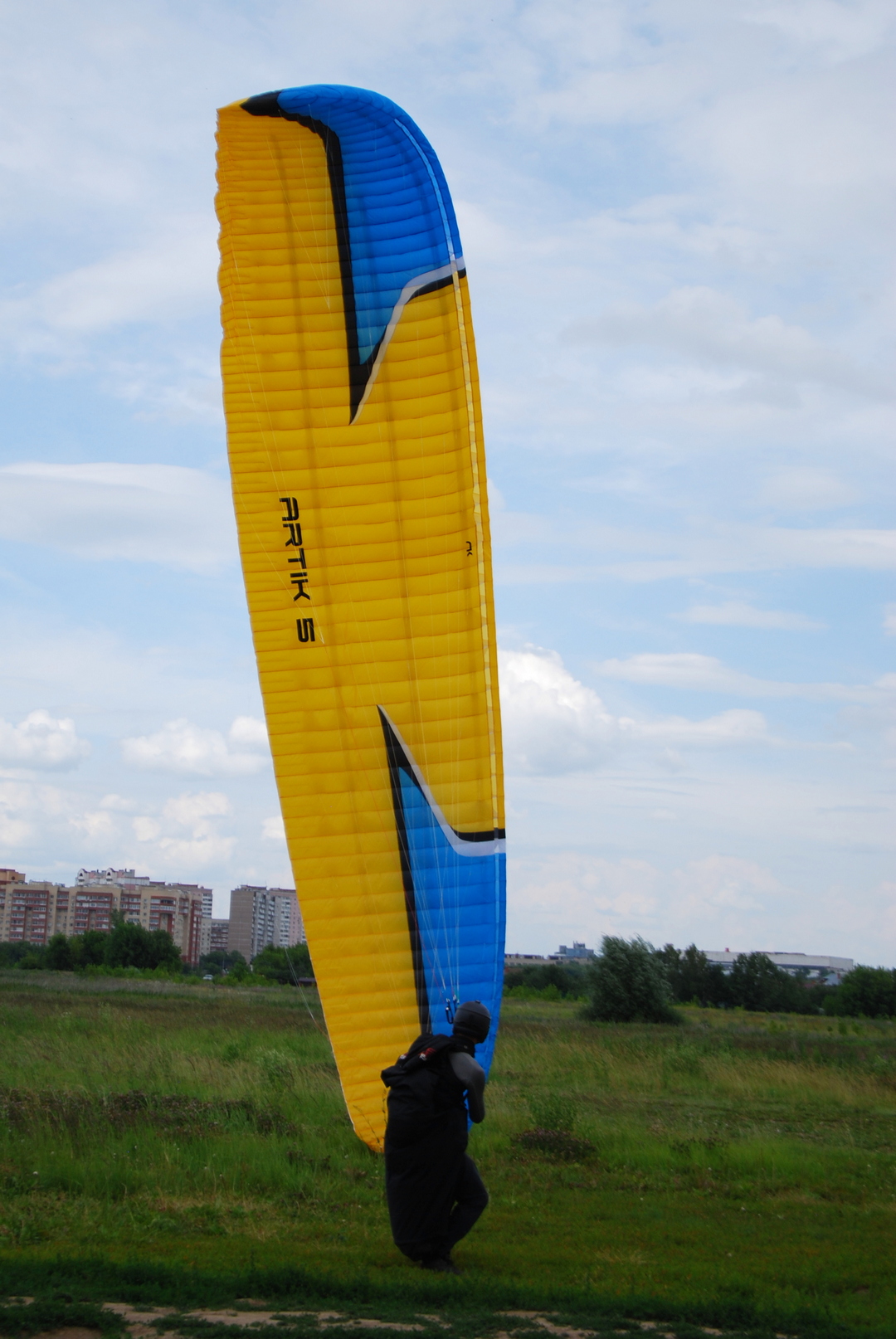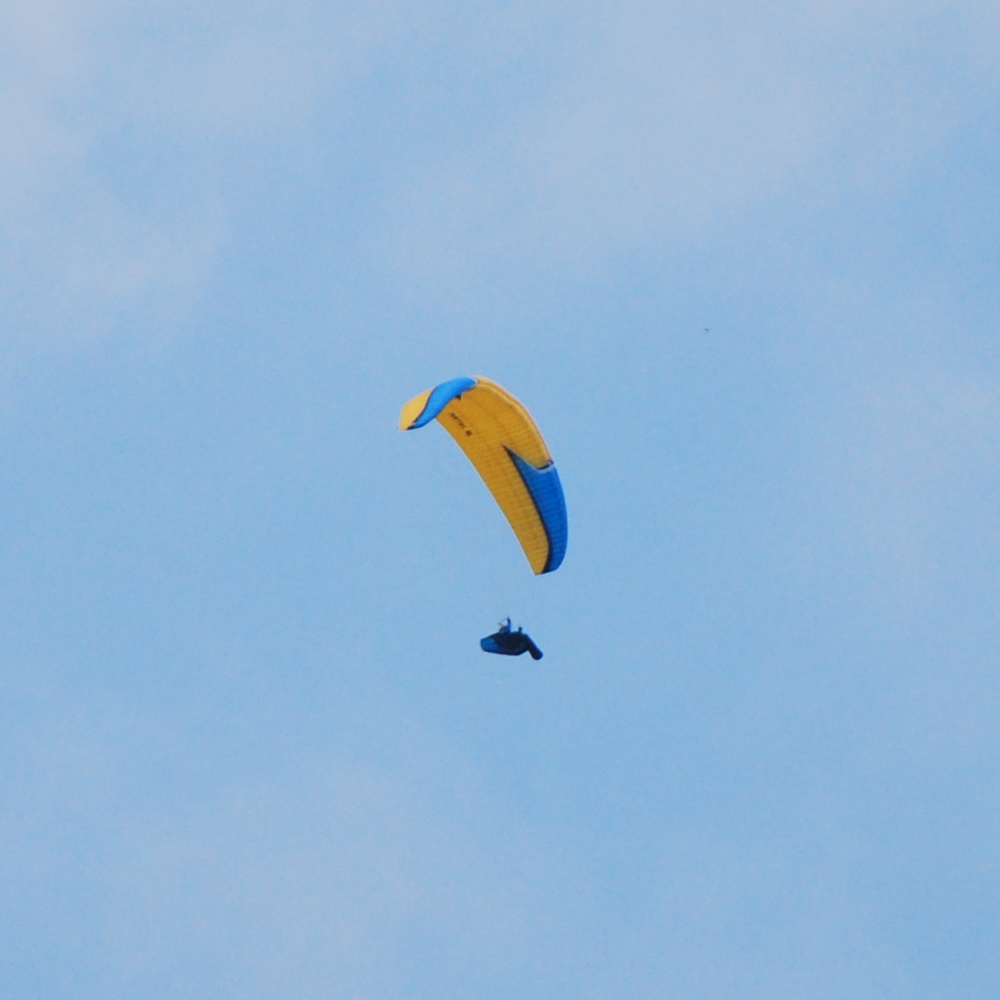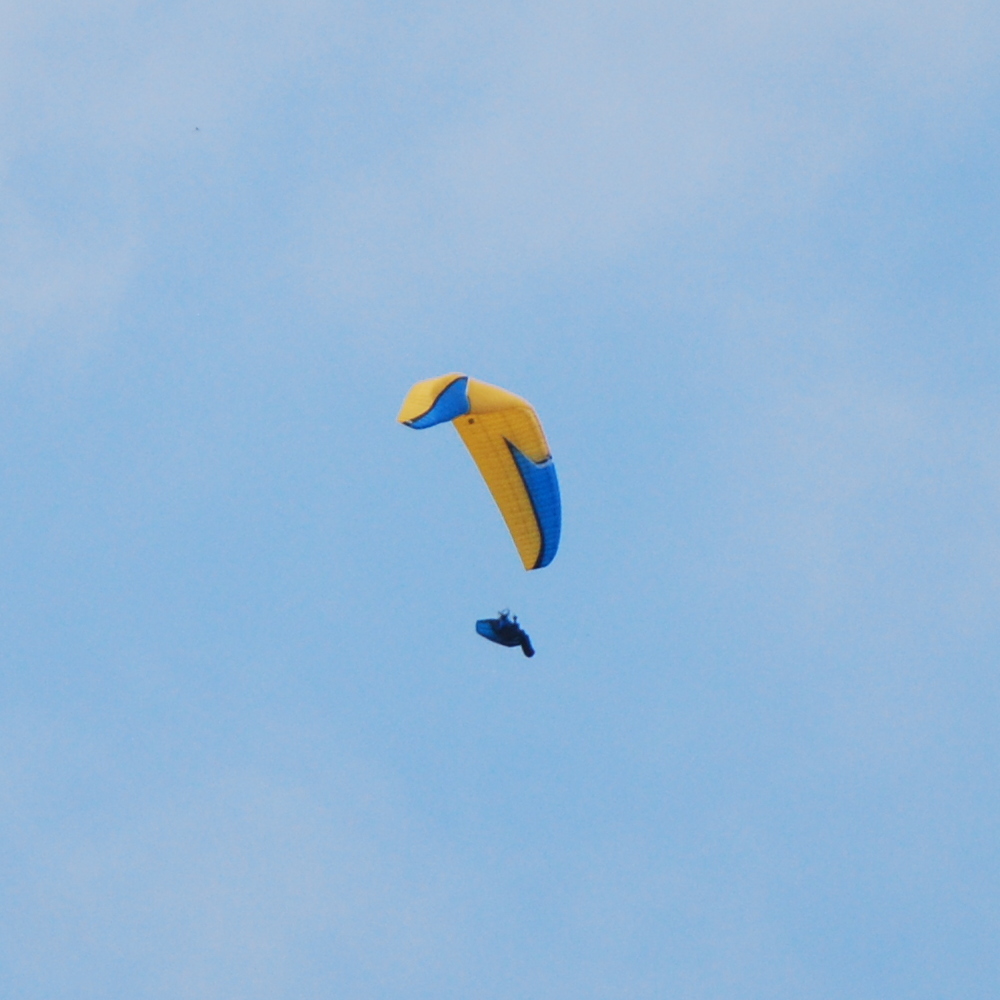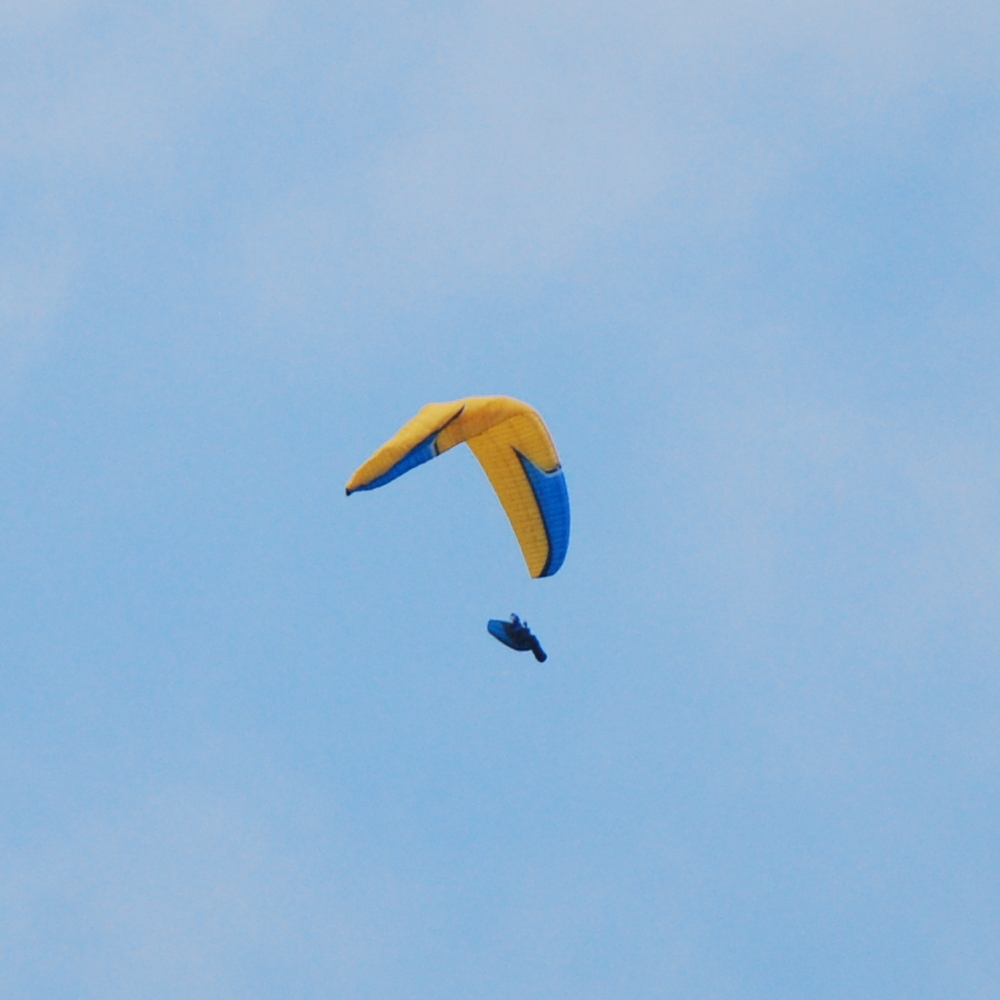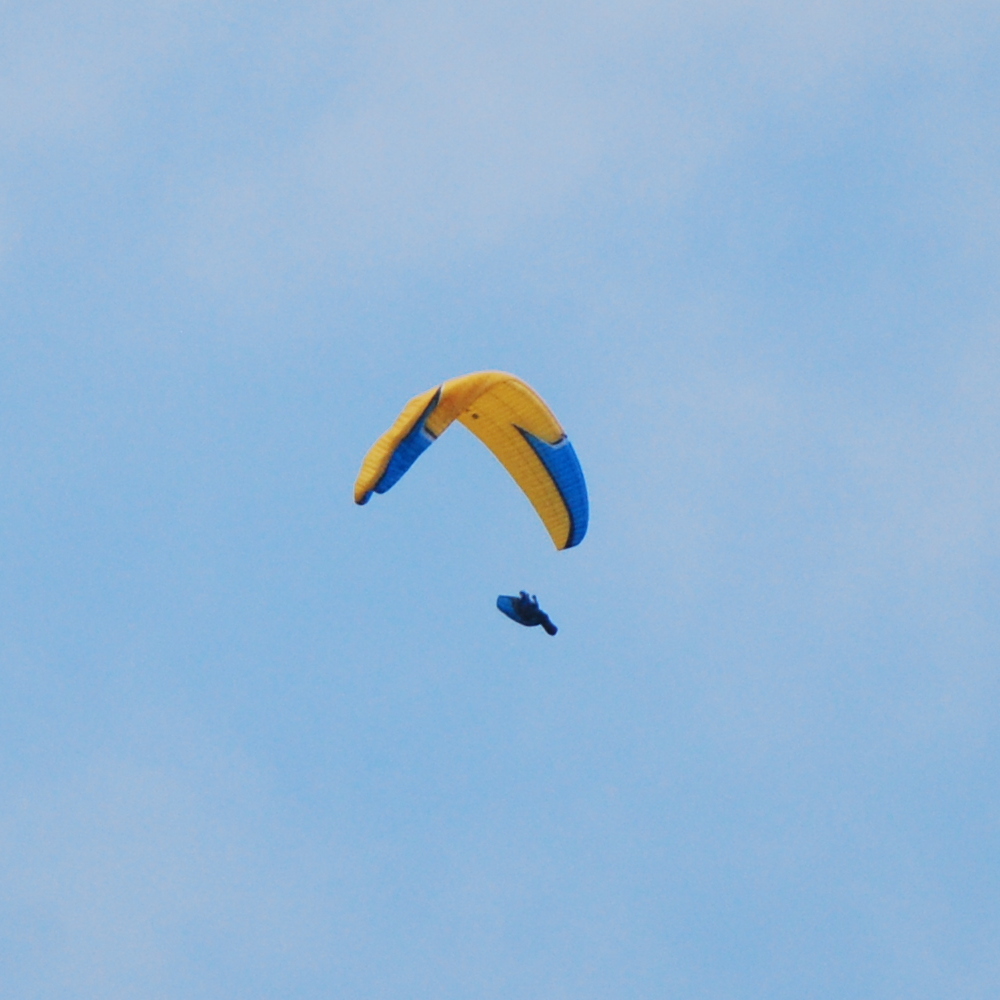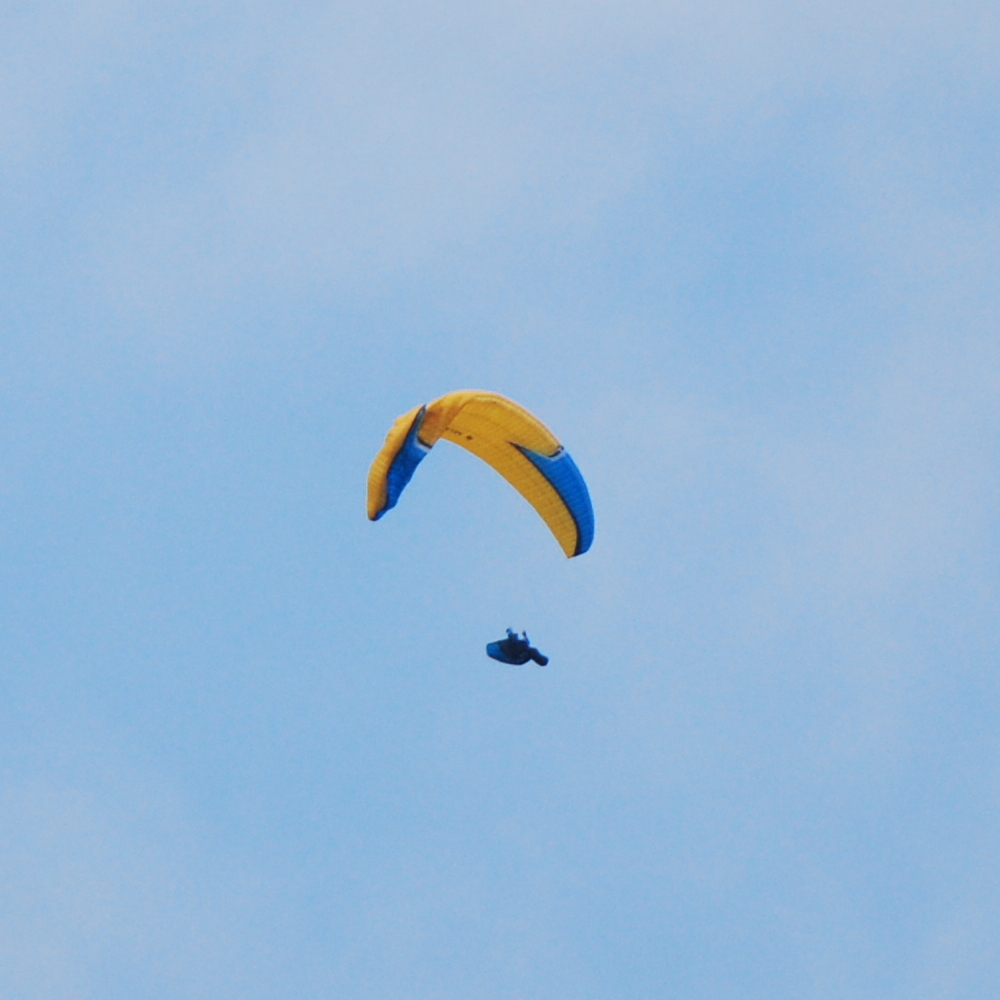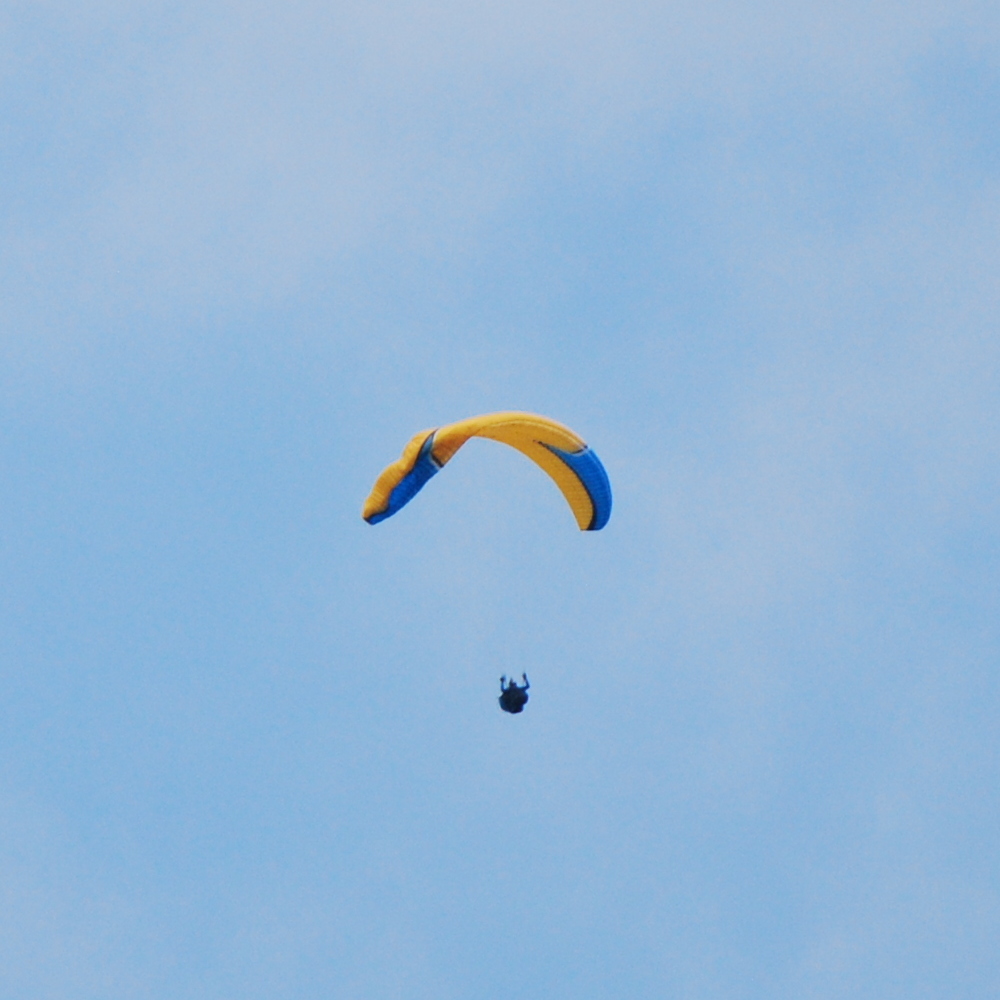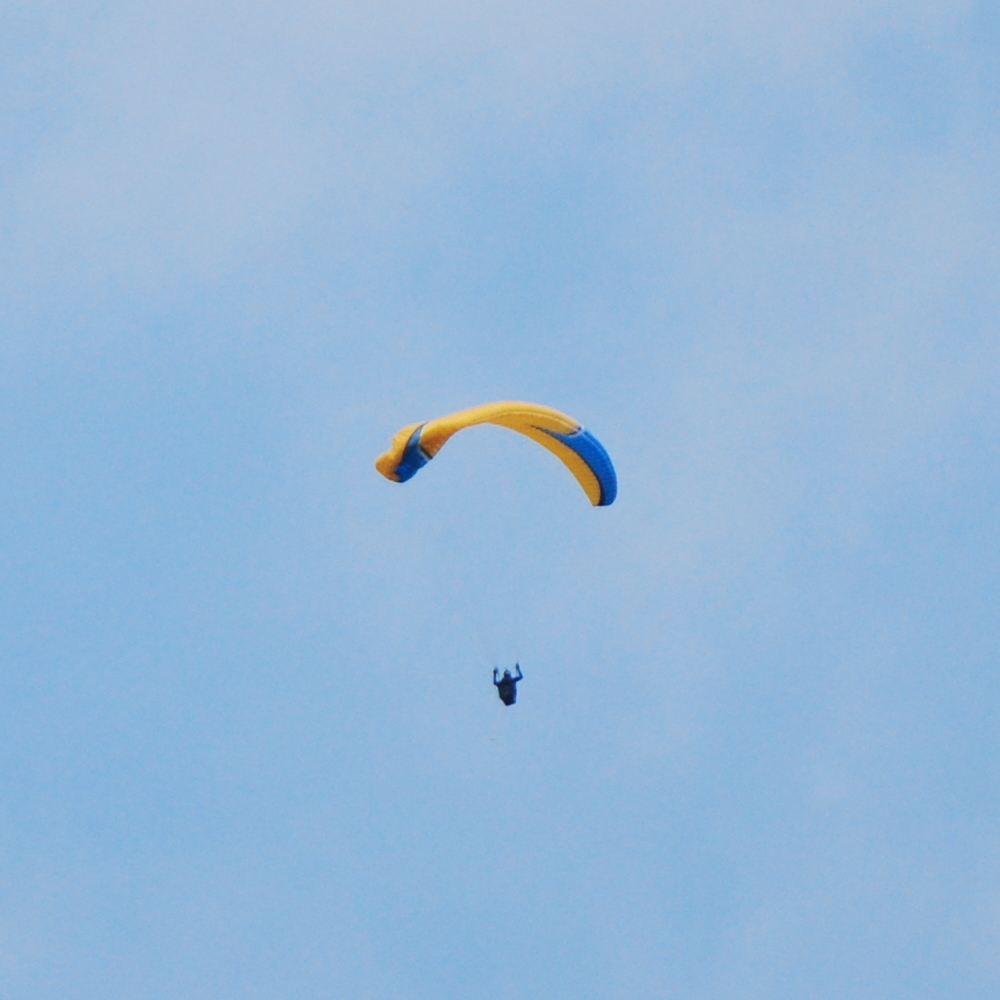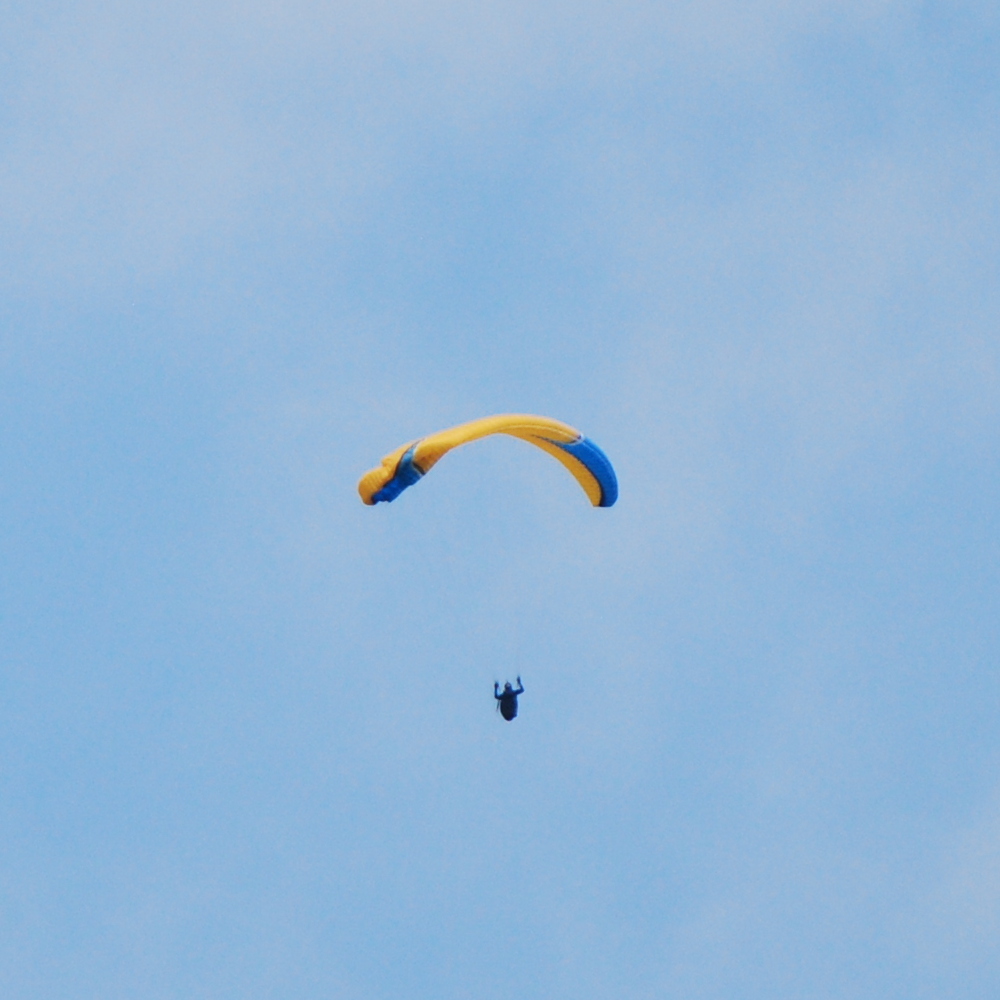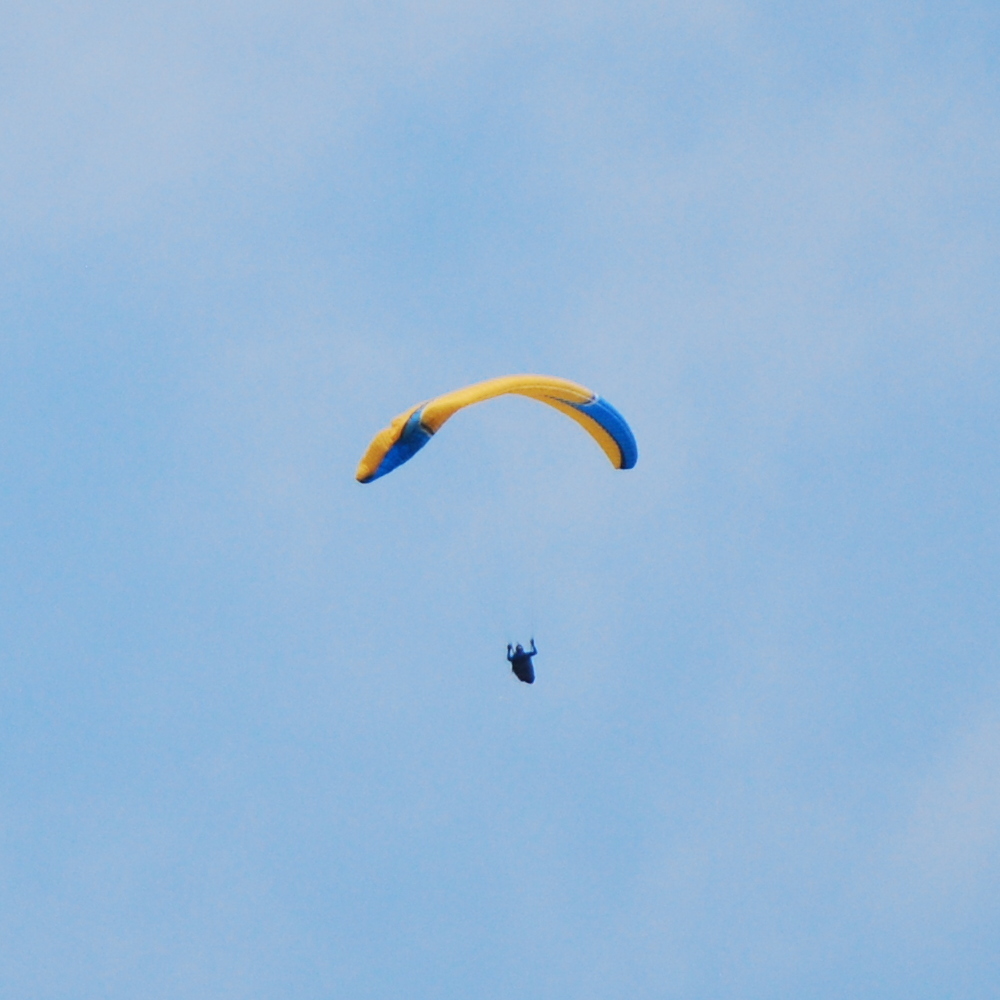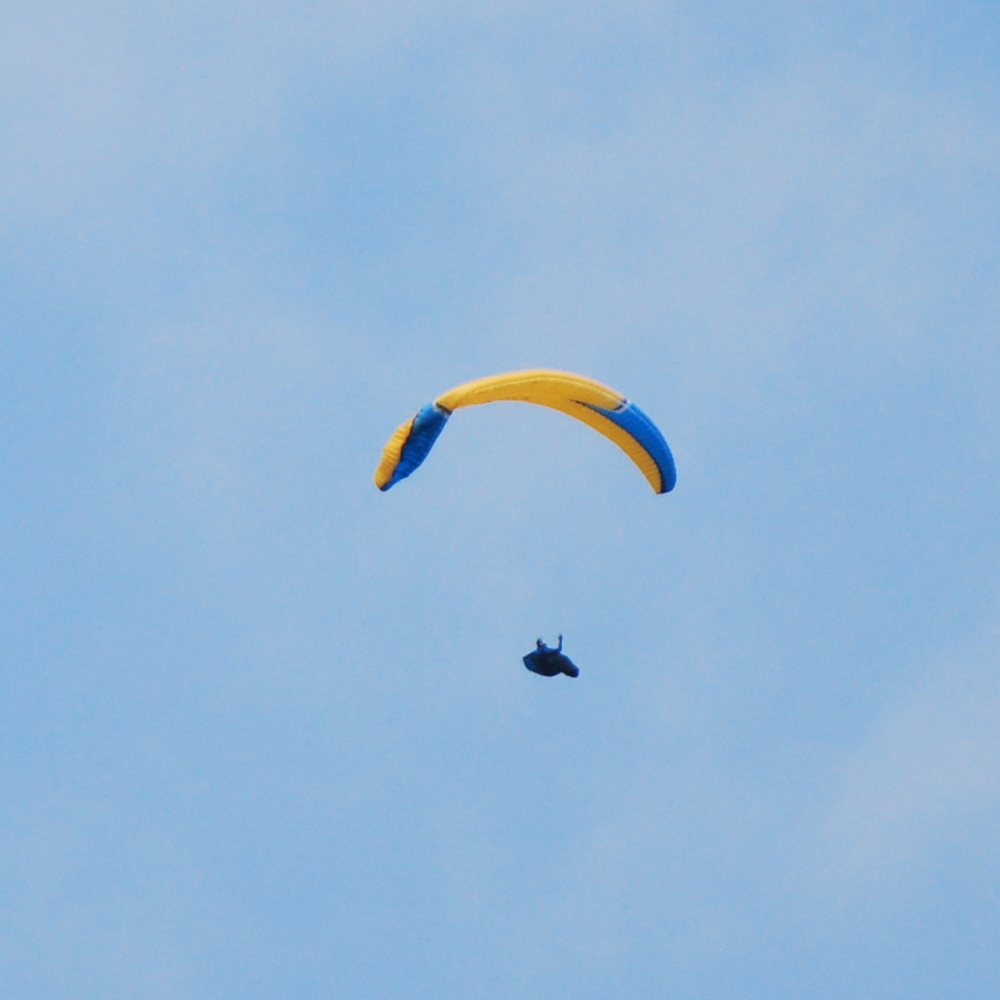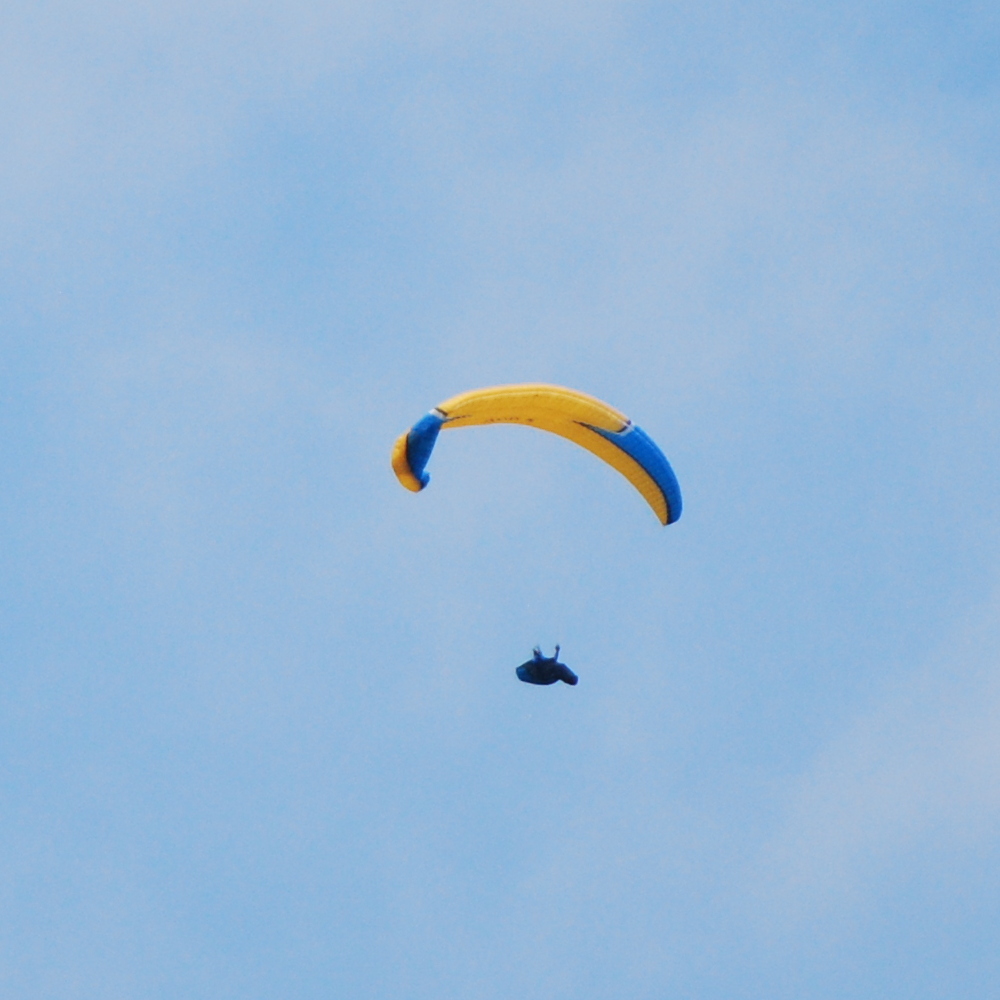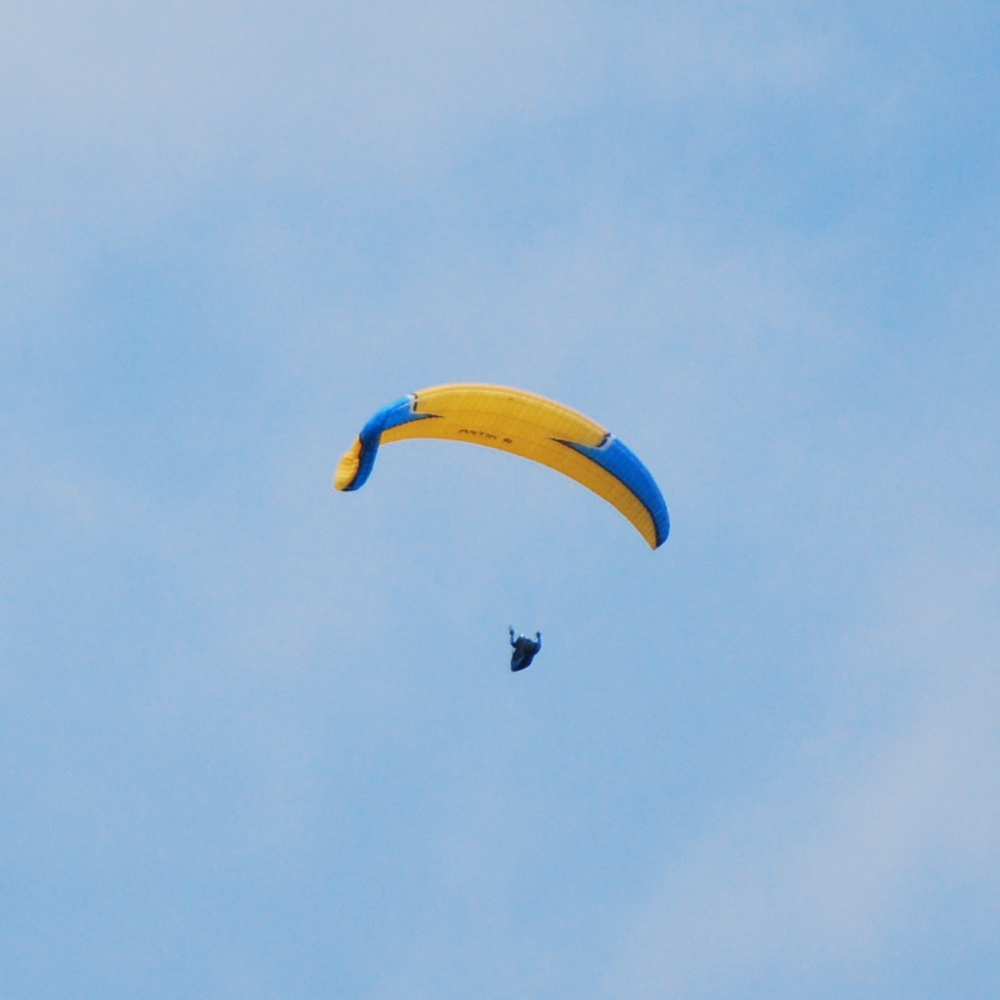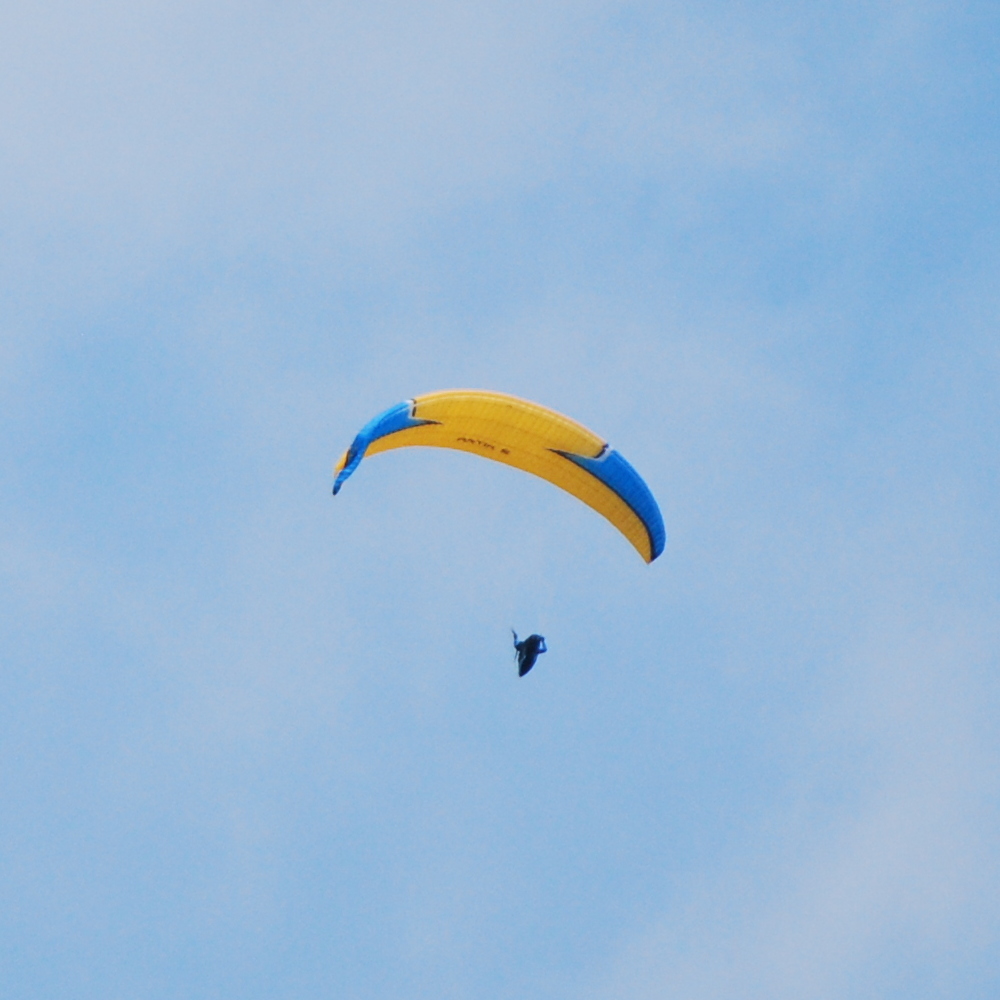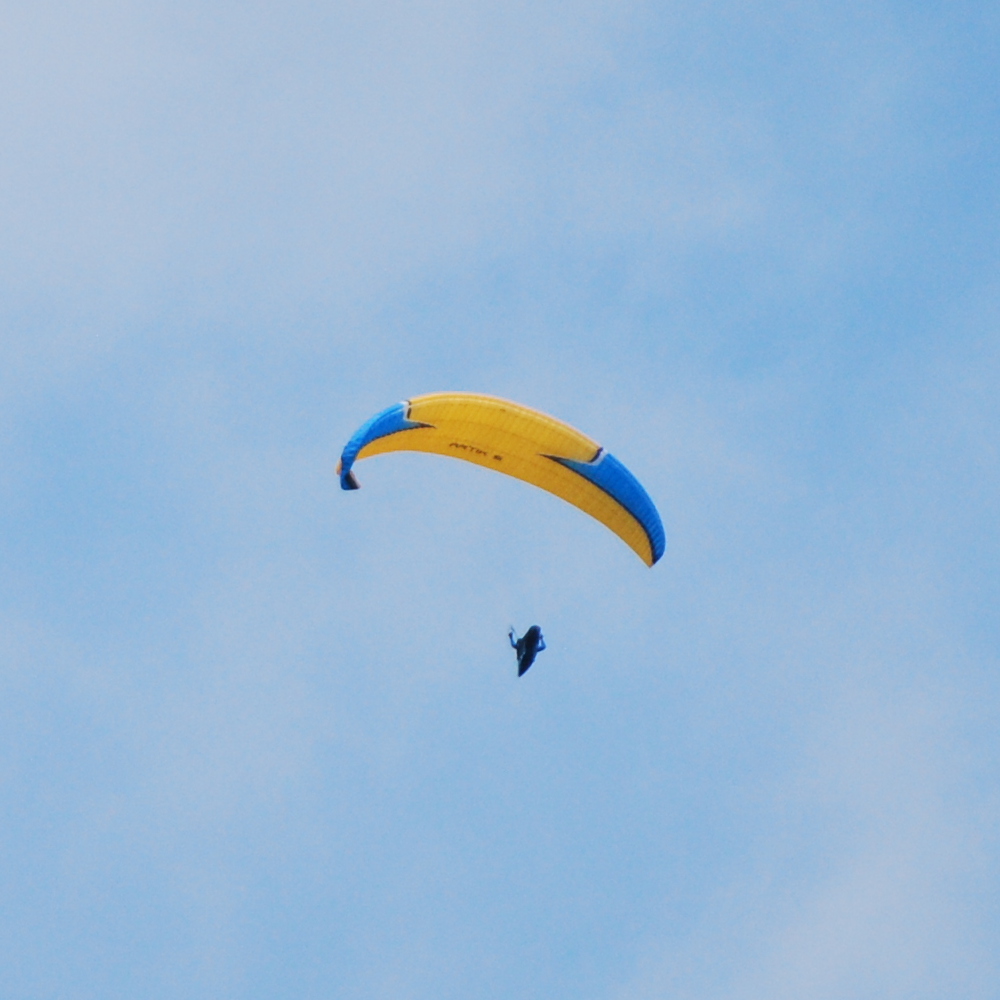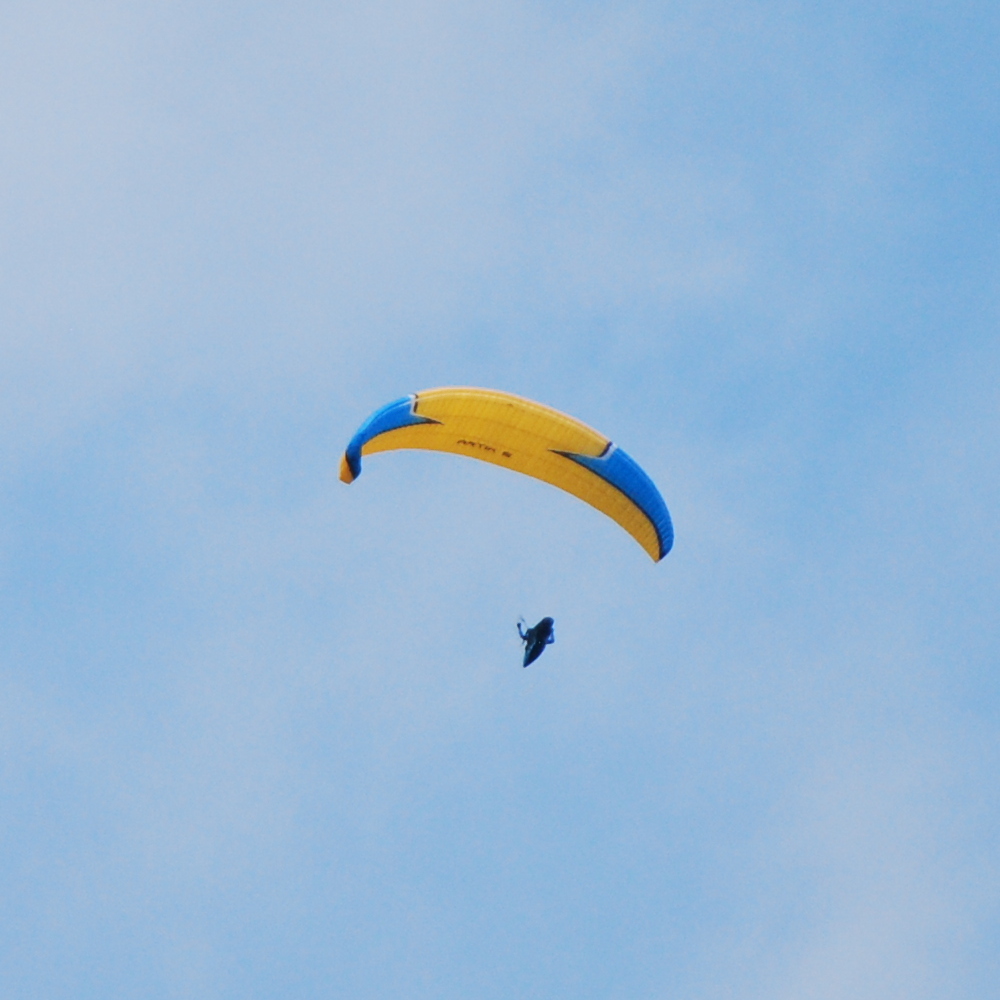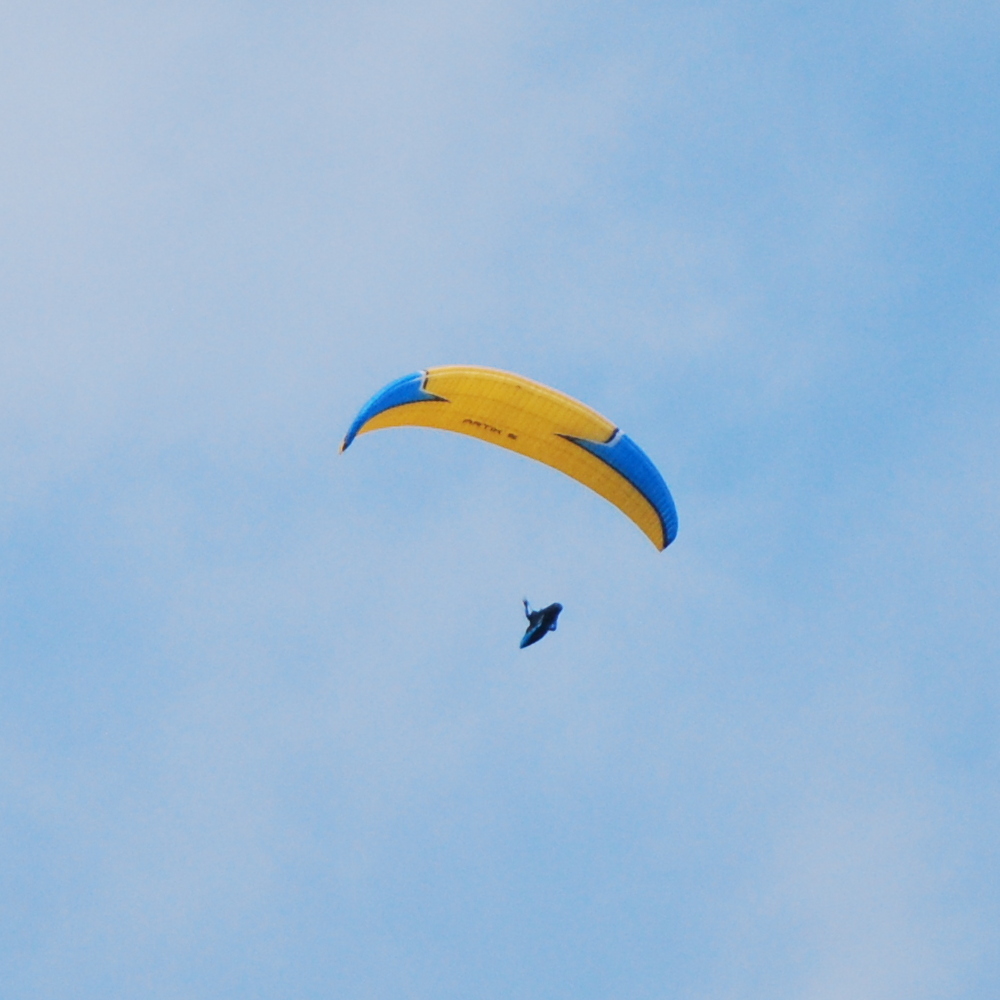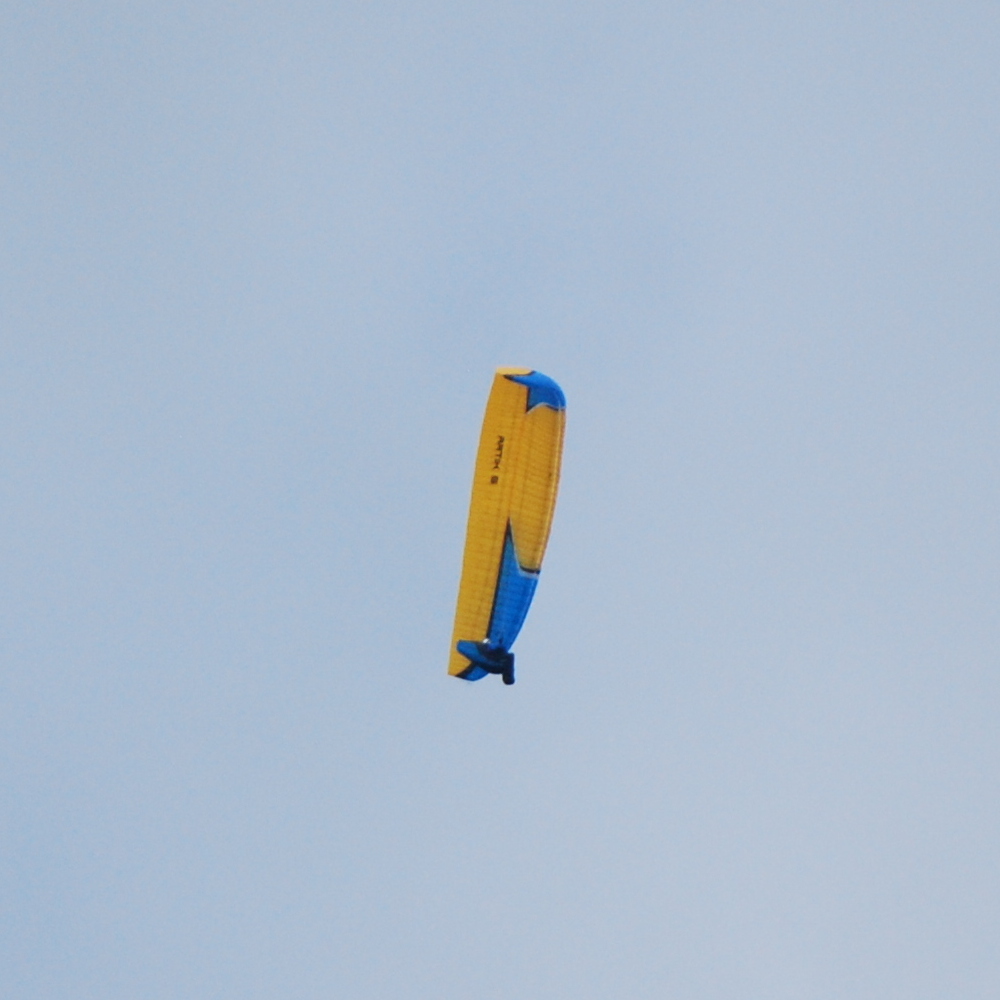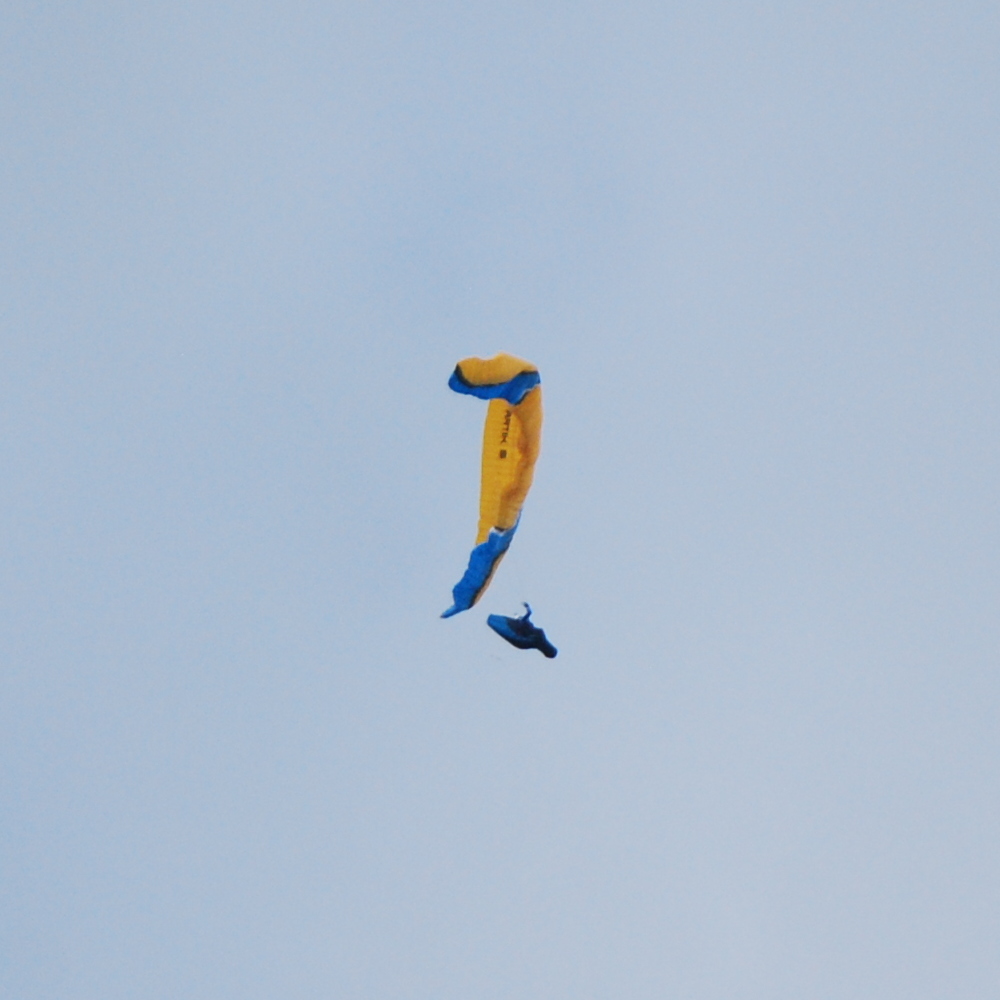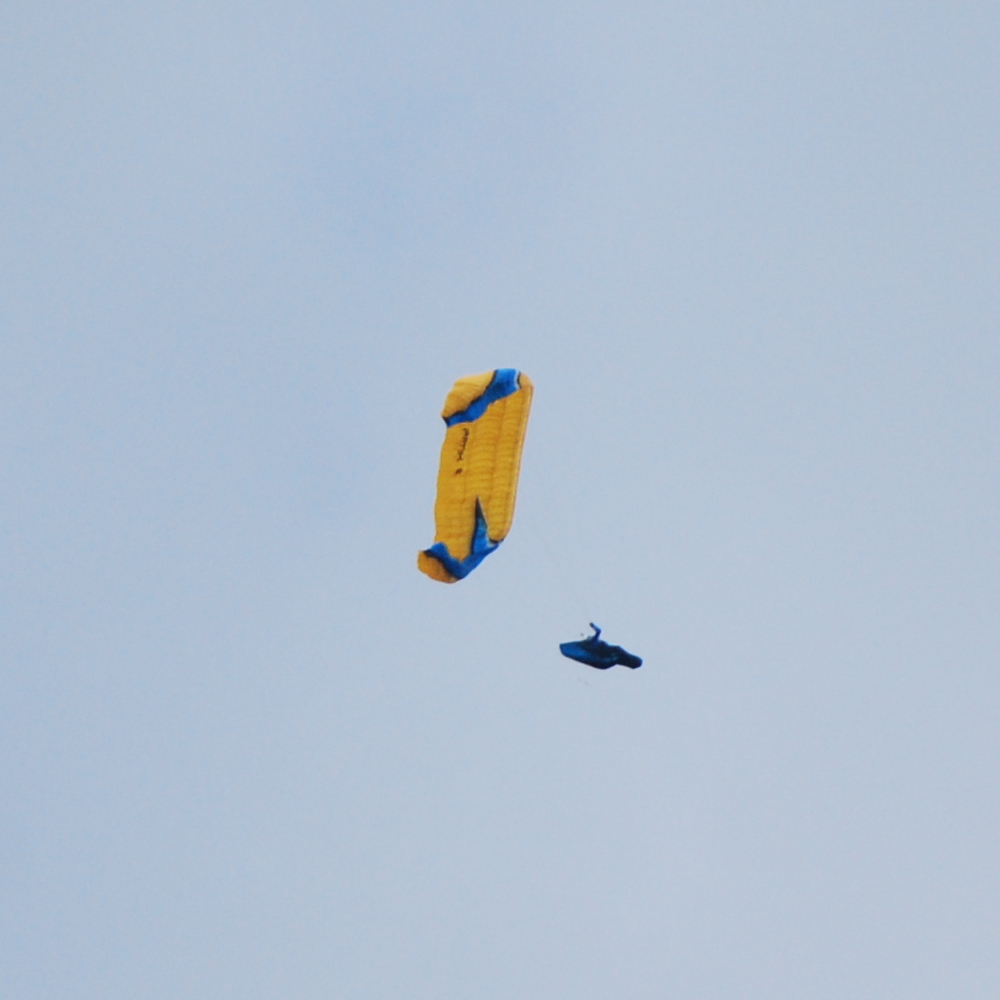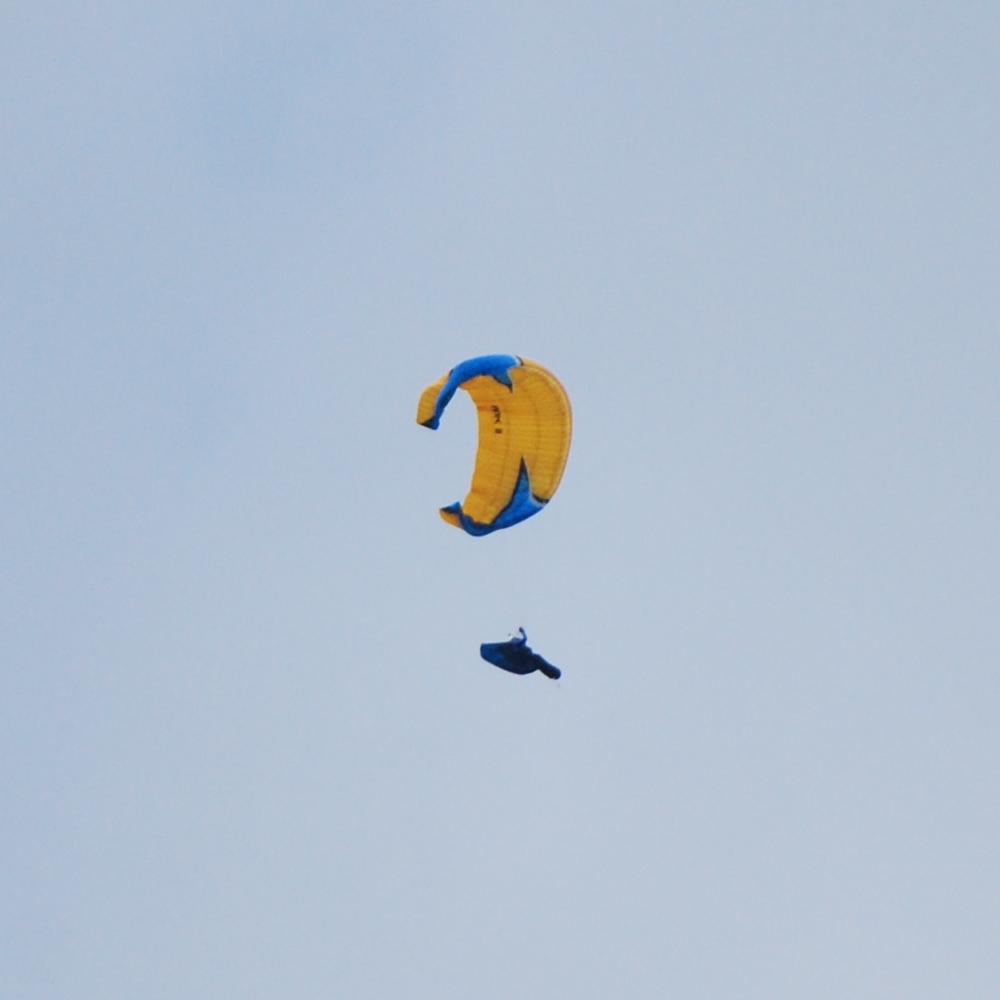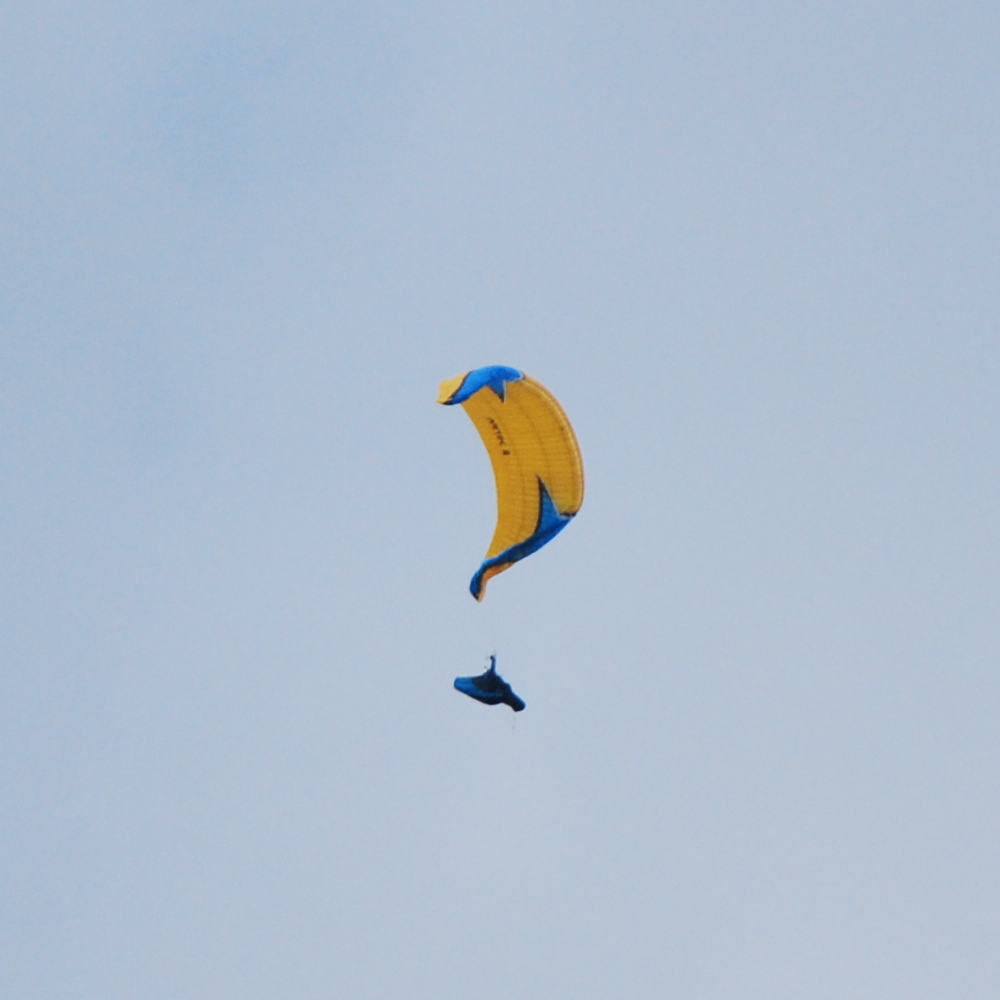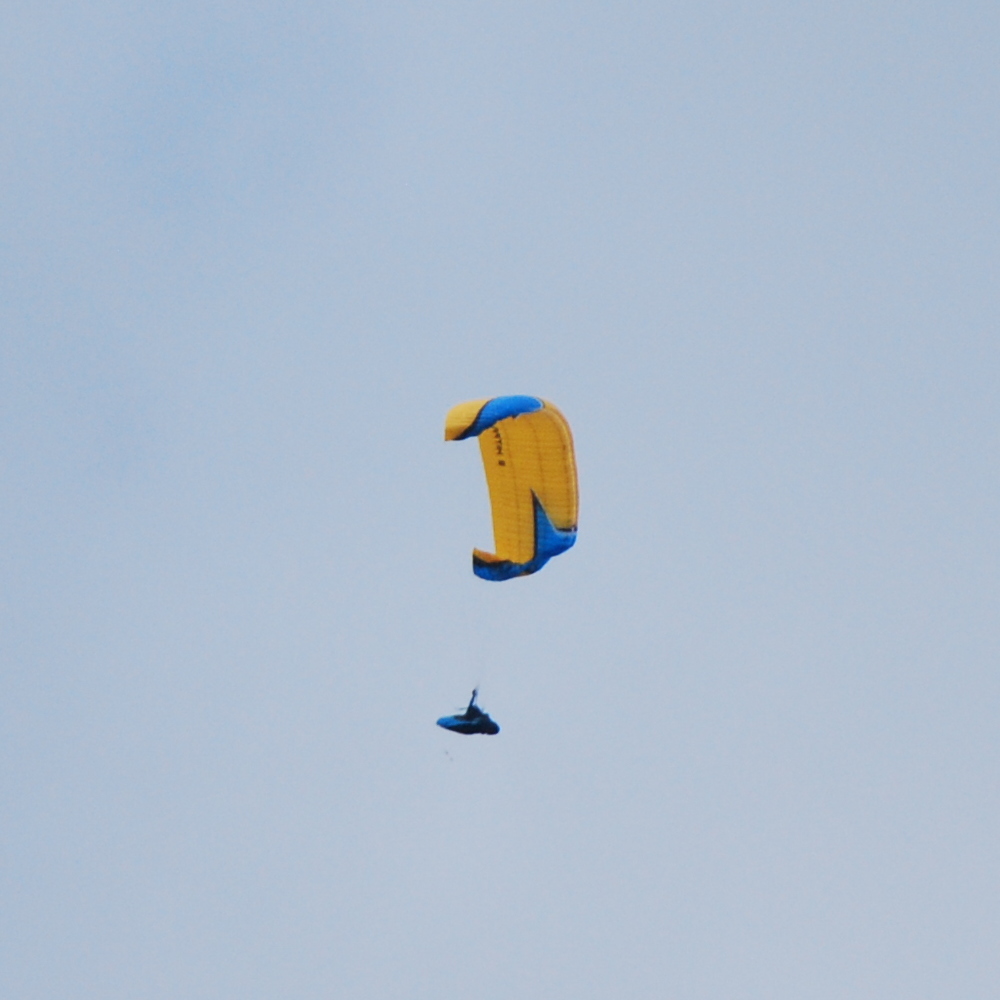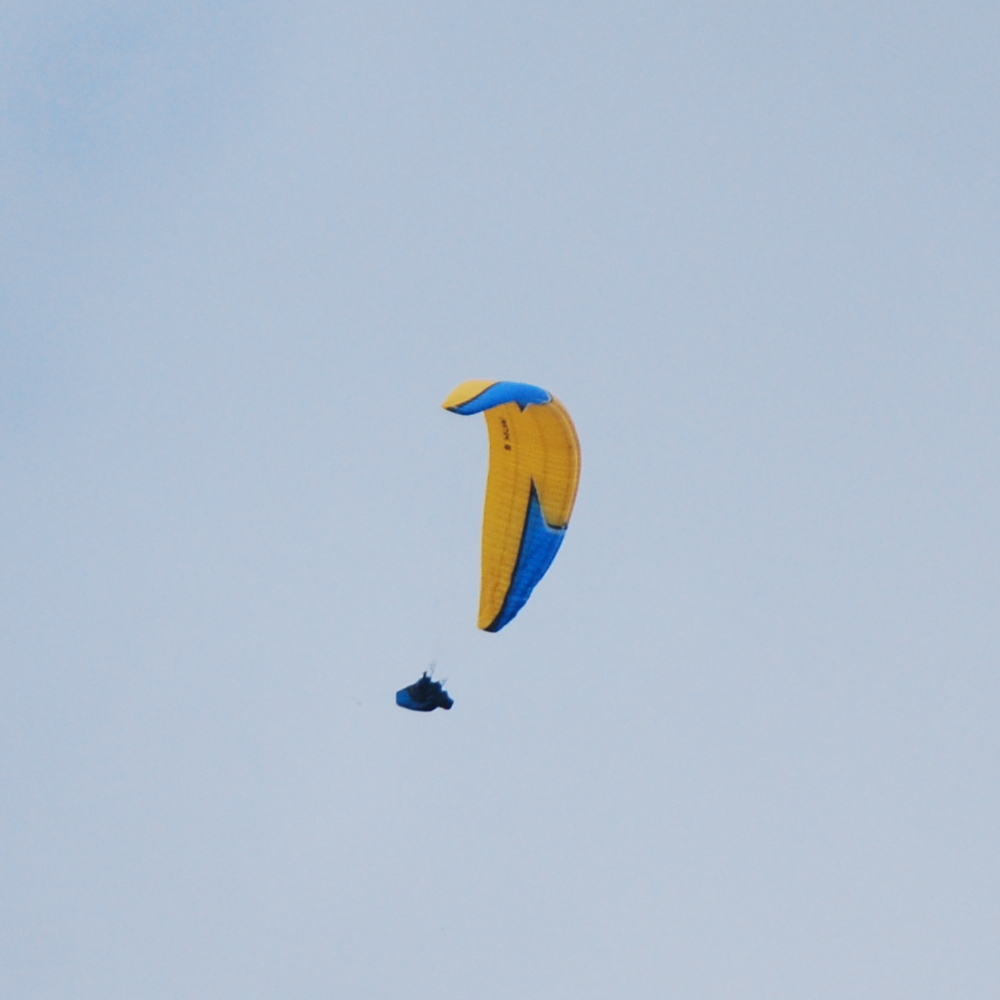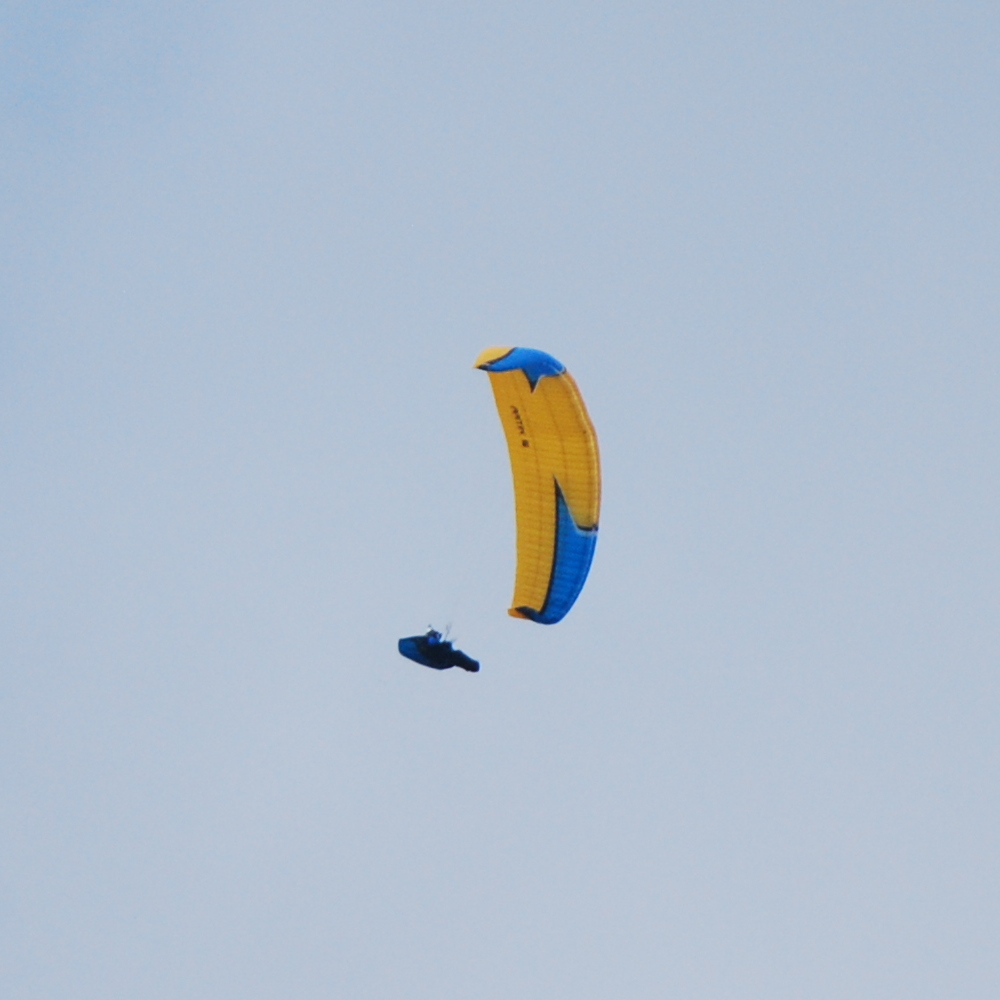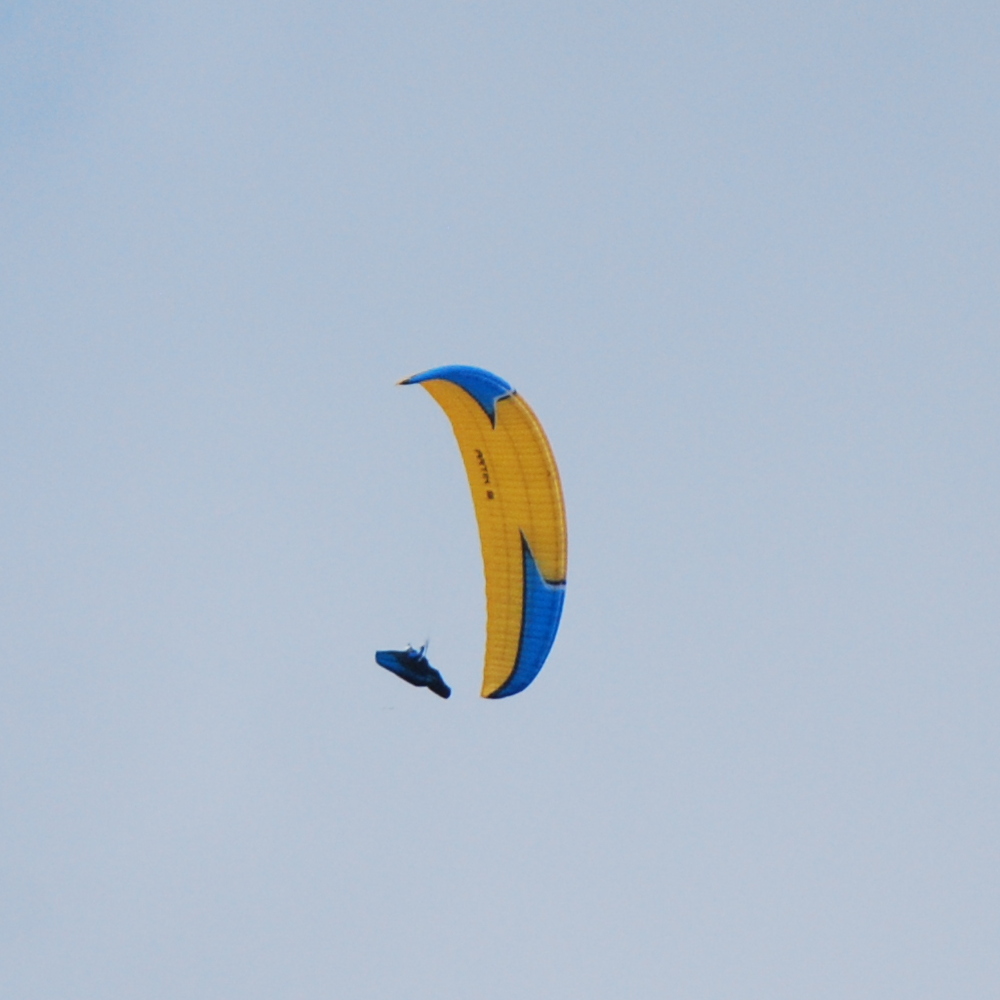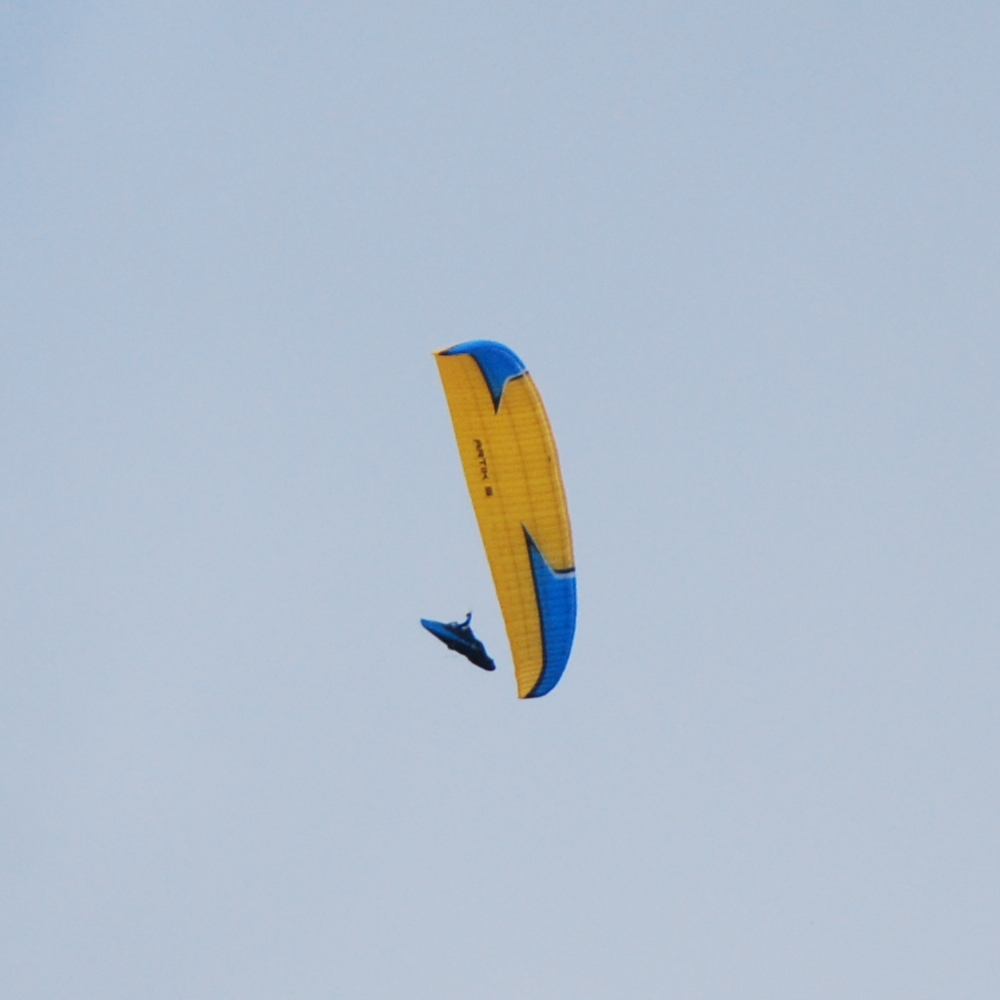More dynamics, more control efficiency, more performance! It's a possible wish list for the new Artik by Niviuk. And, for sure, Niviuk succeeded. But what about the side effects?..
Construction
Risers
Risers are the thing being a lot of time in the pilot's eyesight. That's why their appearance is so important. Niviuk really shines here since the Icepeak epoque, and it's even getting better with the new Artik 5 risers having the top level quality, look and feel, comparable to Advance products. Thin webbing but wide main loops, different color codes for left and right risers, the quality of craftsmansip is well present. Niviuk always had passion for green things, so the Artik 5 has green speed system pulleys! The soft and low-friction dyneema line used in speed system bears an overdrive system with ajustable plastic ball, the factory overdrive setting being 50%. The brake handles are covered with neoprene but have buttons instead of magnets (it's the only possible complain). Really nice risers!
Lines
Highly ambitious: unsheated lines from bottom to top, the total length and cross section are really small for EN C glider. The overall quantity of low cascade lines is rather limited (A2A'1B3C3). The loops are sheated and big enough for fine-tunung the glider by making extra loops. The upper cascades are so thin that they easily tangle requiring some extra attention at takeoff.
Canopy
Build quality
Surface smoothness
Really nice! I mean the shape, the color design is a question of personal preferences but also pleasant for me. The wing shape bears the same (high) degree of ambition which is clearly appreciable if you'll take a look at risers and lines. This glider's look is not aggressive, it's just sporty, more sporty than the previous Artik generations. Relatively flat arc. Wide ears. Narrow intakes. Well market shark nose. Very smooth surface at the front of the wing. Yes, it's looking really sporty, but with no excess. The manufacturing quality is perfect (which is typical for Niviuk).
Artik's leading edge deserves our special attention. Niviuk was the first paragliding manufacturer who used nitinol wires instead of plastic rods to reinforce the leading edge of its gliders, and this Artik also incorporates this interesting solution. Nitinol is a metal with memory effect: details made from nitinol can restore their shape after deformation and further temperature change of around 10 degress Celsium. Goodbye the broken carbon rods and bended soft plastic ones! It's also interesting that, although stuffed with many meters of metal wire, this Artik is unexpetedly light: below 5 kg for size 26. Once packed into concertina bag, the Artik's leading edge becomes very springy — a never-seen effect in case of more classical plastic rods. Later we will see that nitinol also gives some interesting effects in flight.
Takeoff and groundhandling
Groundhandling
Perfect! This Artik is one of the most pleasant Niviuk gliders i've tried to ground handle. And still very pleasant compared to any glider of mid EN C class. The glider rises calmly, with no excess of dynamics. The forward shoot is possible only if you try to "bruteforce" the rise (and is also well present when taking off using lots of winch thrust in no wind conditions). The glider reactions to brakes and weight shift during takeoff are nice, precise and fast, but not too sharp. A very specific feeling of easily controllable "calm force" quickly appears during all these games.
Takeoff
During this test i was always taking off using winches, generally in weak wind to no wind conditions, so it was rather specific. Artik reveals plenty of dynamics from the beginning of each takeoff, with no big surges if you handle it in the right way, with no brutality. The no wind takeoffs using winches is a real challenge in this case. In this kind of conditions i prefer to wait until the thrust becomes really high and to begin the takeoff having maximal thrust. In this case the Artik remains manageable but may require a short brake input of around 70% to prevent overshooting. Taking off with less thrust is more smooth.
Flight
This time the Niviuk philosophy is very close to Advance philosophy but still conserving the Niviuk look, feel and individuality.
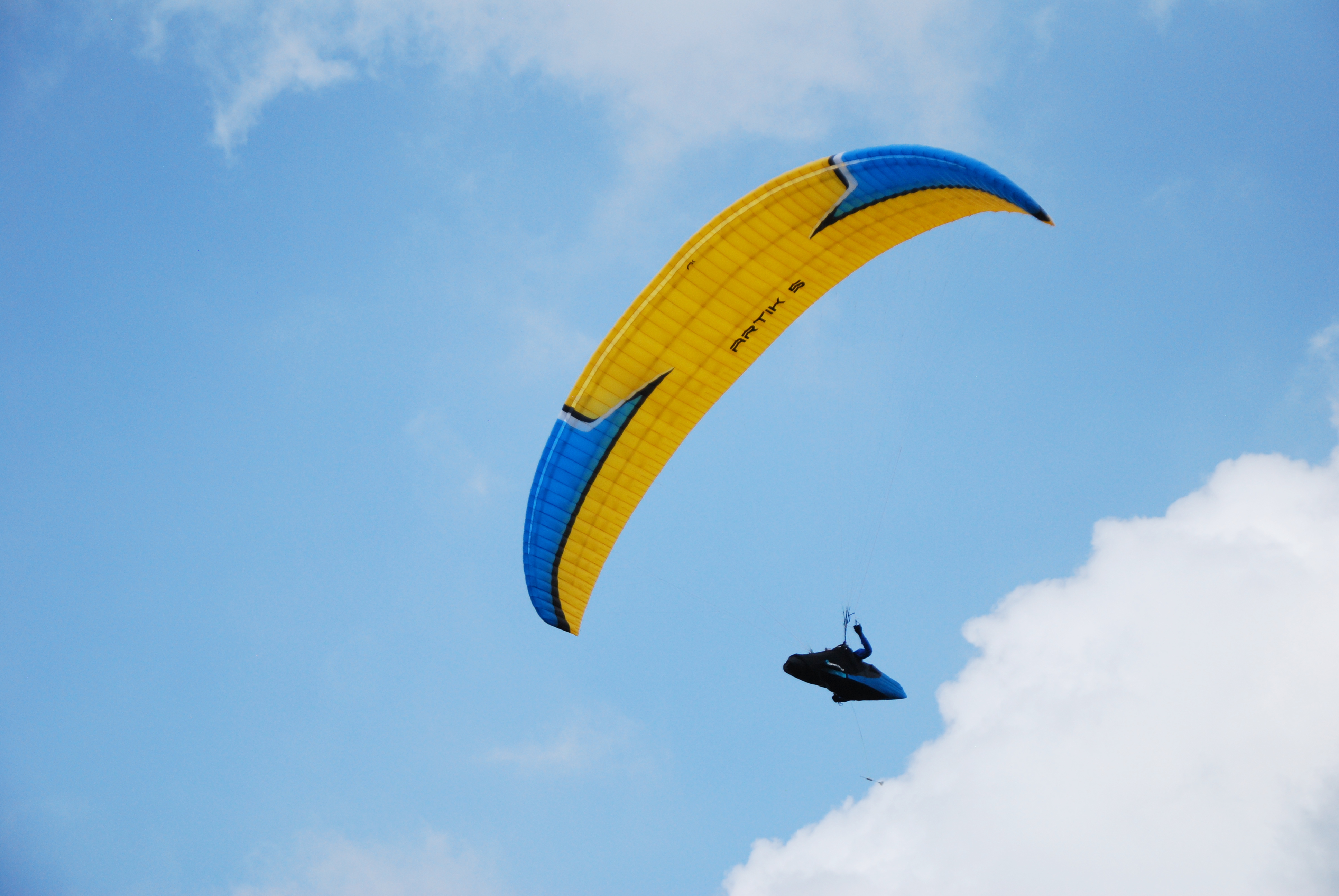
Glide
Very concurrent in EN C class! I didn't have a possibility to do long glides with Advance Sigma 10, but my purely subjective opinion is that Artik 5 has very similar overall performance level. This concerns also the accelerated flight.
Accelerated flight
Speed gain
Speed system effort and travel
Maybe the most ambiguous part of this test drive. The Artik's speed system has one of the longest travels i've every met before. I'm using a homemade 2-step speed system pedal, and it was more than enough to fully engage any speed system of any glider during some years of my tests. But it's not the case for Artik 5! This glider requires a 3-step pedal to reach the full speed system travel with the admittable level of effort. Or (as i did it) you should eliminate any slack in the speed system or even give it some pre-tension at 0% speed system travel.
With the overdrive at its default settings i couldn't fully engage the speed system, the maximal travel i could reach was around 70%. And it was really hard to pull the last centimeters where the overdrive is fully engaged. Okay, let's move the overdrive ball down the rope thus shortening the leg travel but getting more effort on the pedal — a common practice for experienced Artik 5 owners. With such a setting i could engage the speed system for more (around 80%), but ohhh my legs! It was really, really hard from the first centimeters. Later i managed to fine tune my speed system and got all the 100% of speed system travel.
And what about the speed gain? A decent +13 km/h at 100% of full speed system travel, not bad! Being honest, this number is far from being very precise because this Artik is not very stable at trim speed which has variations about 2-3 km/h even in relatively calm air. Another good thing: the glide is virtualy unchangeable up to 50% of speed system travel, and it doesn't change dramatically even at higher speeds.
Soaring and sink rate
Maybe not the EN C class leader in straight flight, the Artik is impressively efficient while spiralling. This glider conserves a moderate sink rate even in very compact spirals. Soaring with Artik 5 gives very pleasant overall impressions, but it's also releated to control efficiency and feedback provided by the glider.
Turn ability
Brakes efficiency
Weight shift efficiency
Nice and seet, the leading level for mid EN C class. The brakes are not ultra efficient (we have Skywalk Cayenne 5 for this!) but super precise. There's no slack, the brakes are effective since the first centimeter of travel. The reaction to brake input comes in instantly, but it's rather smooth, with no excess. The best way to taste Artik's reactions is the thermal soaring. It appears that Niviuk invested a lot of time and effort in this finely tuned turn, still very efficient and easy event in tricky thermals. Like Advance Sigma 10, Artik has a very "transparent", very simple turn behavior with no peculiarities. You get just what you want and expect. There's no need to adapt to this glider. You do what you want, the Artik does the rest, fitting to your inputs in a smooth and gentle manner. For me it was so from the very first thermal spiral, but it's just a personal impression. The glider reaction to weight shift efficiency is a bit less pronounced but also very sharp and easy to understand.
Comfort
This Artik delivers a generally high level of comfort but also has some peculiarities in behavior. It appears that the nitinol wires (less rigid and more springy than plastic rods) make the glider react to turbulence in a specific manner. Leaving the thermal core may result in a short but very marked wave of discharge rushing from front to the trailing edge. Although lasting only some fractions of second, this wave is something very distinctive, even unique. Sometimes you may also experince a short but very powerful forward pitch in the same situation of leaving the core. Entering the core is much more calm, the Artik easily "punctures" the core with no marked pitch and snaking but some wobbling may occur time up to time (which is not typical for this kind of gliders but more or less common for many of Niviuk wings). The collapase resistance is objectively high but the leading edge is more "springy" than usual, most possibly because of that nitinol inside the leading edge. And if you want to calm the things down a bit, just push some speedbar! At the speeds slightly above the trim this Artik is more smooth and calm than at trim. Pitch dampening is above average, but if you want it, you will get it.
Feedback
Rear riser feedback
Brakes feedback
Airspeed feedback
Generally above average. The best feedback is proveded by rear risers, both at trim speed and in accelerated flight — mostly because of very light effort in rear handles which gets even lighter at high speeds. That's why even the subtle variations of effort are clearly appreciable.
The brakes effort is very fine tuned, it's comfortable whroughout the whole control range. The changes in brake effort are typical for mid EN C, with no excess. The airspeed feedback is above average, but the speed changes occur gently and calmly. Artik is very calm on both pitch and roll, you can get only a small feedback from these "data transfer channels". It's not a drawback, just a peculiarity (and also one of the reasons of high comfort).
Dynamics and energy retention
Dynamics
Energy retention
Clearly above average! But there's nothing to worry about since Artik is not too sharp in all its evolutions and transitional processes.
Явно выше среднего! Но опасаться нечего, ибо все переходные процессы происходят у Артика достаточно плавно. Традиционный способ оценить энергоёмкость и динамику — винговеры — очень понравились. Аппарат охотно уходит в очень амплитудную раскачку, но контролировать процесс достаточно легко.
Dangerous flight regimes
Asymmetric collapse
Almost excellent, but the collapse and recovery behavior is more or less random, following one of the possible scenarios. The first possible case is a gradual reopening going from center to ear, section by section, demanding some time to fully reopen. The second case in an "explosive", instant and total recovery of all the collapsed wing part. The Icepeak 6 pilots are very familiar with such a behavior. Both the surge and the course deviation are of very reasonable amplitude, around 45 and 90 degrees respectively. The heigh loss is also very moderate, around 10 meters or less.
Frontal collapse
Not perfect because of the tendency to enter the parachutal stall during reopening (although it can be treated as an advantage because there's no violent forward surge during recovery). The reopening begins immediately after the collapse, but the canopy swings back at the same time, slowly coming back overhead in a fully reopened state already. Once overhead, the glider refuses to rebuild the horizontal airspeed during a couple of seconds which are enought to loose around 10 meters of height and to gain some vertical airspeed. After that the glider performs the well-expected forward surge of very modest amplitude and returns to normal flight. No pilot action is needed to recover, but it may take more time that you may expect (up to some seconds), and the height loss may be over 15 meters, above the typical values again. The advantage is that the recovery process is very smooth, and the developped parachutal stall after a frontal collapse may become possible only in a very unfavorable situation like the combination of high humidity, low temperature and prolems with lines geometry.
Spin out of thermal spiral
Good. The brake travel is reasonably long, the brake effort clearly increases before stall... but the beginning of stall is not very well marked by the drop of brake effort. Fortunately, the regime comes in slowly, you have at least one second to recognize it and to rise the internal brake before the thing will go rough. The exiting surge is rather dynamic but limited in amplitude, so you can stay in thermal spiral.
Quick descent techniques
Ears
Stability
Sink rate
Almost perfect. The effort on external A-lines is moderate, the regime is more or less stable if you keep the A-lines travel within certain limits. Getting out of these limits may lead to instability. The sink rate is moderate, around -2 m/s. Engaging the speed system gives the only effect of increasing the sink rate, the stability of regime remains the same as without speed system.
The fifth generation of Artik redefines (again) the Niviuk's vision of mid EN C glider. The new Artik has got more dynamics and more performance which is now at the very top of mid EN C class. The new turn behaviour is also Artik's strong point: it's very "transparent", easy and intuitive (giving a clear parallel with Advance Sigma 10). The strongest point of this new Artik is its behaviour in thermals , easy and very efficient, making this Artik a strong contender even for Cayenne 5. The special attention for small details is still here: the risers which were already a perfectionist's dream are even better now. But there's no ideal glider, and this new Artik also have some imperfections which are rather creating some individuality than being a serious headache. The possibility of "explosive" recovery from asymmetric collapse but almost parachutal stall during recovery from frontal collapses are within the limits of admittable for mid EN C but it's something new to Niviuk creations. The speed system is somewhat perplexing — it has a very long travel or a very high effort depending on the overdrive setting (with default settings you'll probably meet both effects at different speed system travels).
What is the portrait of potential Artik 5 pilot? This glider meets a wide range of demands, it's versatile enough to be easily adopted by many pilots. This Artik will positively impress both in strong mountain lifts and in upwind transitions above the windy flatlands (if You have the legs long and strong enough to fully engage the speed system). The minimal demanded airtime is around 50-70 hours during 2-3 flight seasons.
Some final words from myself. Personally i like this glider despite of its small drawbacks because it's very pleasant during 99% of a typical flight. It's definitely better than Artik 4 (mmm, i'm not talking now about their speed systems). Thanks Niviuk!
Pros
- High manufacturing quality, special attention to small details
- Perfect turn
- Generally high performance level
Cons
- The speed system is very long or very heavily loaded (depending on the overdrive setting)
Peculiarities
- Random, sometimes "explosive" behavior during recovery from asymmetric collapses
- The almost-parachutal stall during recovery from frontal collapses
Thanks
Special thanks to Alexander and Tatiana Leonov for offering the glider for tests.
Copyright
- Foto: I. Tarasova, A.Tarasov
Model
| Year | 2017 |
| Brand | Niviuk |
| Homologation | EN C |
| Positioning | mid EN C |
Conditions
| Flight sites | Konchinka, Zagorsk (winch towing) |
| Harnesses | |
| Total flight weight | 100 kg |
Technical data
| Flat area, sq. m. | 26,3 |
| Flat A.R. | 6,3 |
| Flat span, m | 12,87 |
| Projected area, sq. m. | 22,37 |
| Projected A.R. | 4,86 |
| Projected span, m | 10,43 |
| Cells, total | 66 |
| Cells, closed | 14 |
| Flattening, % | 15 |
| Lines height, m | 7,85 |
| Lines length, m | 268 |
| Lines scheme | A2A'1B3C3 |
| Accelerator travel, mm | 160 |
| Takeoff weight, kg | 90-110 |
| Glider weight, kg | 5 |
| Size | 26 |
Materials and components
| Upper surface, leading edge | Porcher | S9017-E25 |
| Upper surface except leading edge | Porcher | S9017-E25 |
| Bottom surface | Porcher | S70032-E3W |
| Ribs, supported | Porcher | 9017-E29 |
| Lines, upper cascades | Liros | DC40 |
| Lines, middle cascades | Liros | DC60 |
| Lines, main (lower) cascades | Edelrid | 8000U |
| Lines, brakes | Teijin | TNL-280 |
| Risers, webbing | Cousin | 3455 |
| Risers, pulleys | Ronstan | RF25109 |

